Staying warm and comfy is the ticket to any great outdoor adventure — and it literally starts with your base layers. These next-to-skin pieces are the unsung heroes of winter sports and chilly shoulder-season adventures. Base layers for women come in different weights — light, medium, and heavy — and the higher the percentage of wool, the warmer it will be.
Among our favorites are the medium-weight Smartwool Women’s Classic Thermal Merino Base Layer Crew and matching Bottoms, which provide middle-of-the-road warmth for moderately cold days at the ski area. Wool holds warmth even when wet and naturally beats back odors. Synthetic fabrics also have a lot to offer. They’re often more durable, elastic, and affordable than wool, like the Helly Hansen LIFA Crew Base Layer, which you can snag for less than $50. While you tend to give up some odor control, synthetics are the fastest-drying textiles.
In 2025, Senior Editor Morgan Tilton, Staff Writer Heather Rochfort, and plus-size outdoor apparel pioneer Raquel Vélez tested 16 base layers for women during winter season in Colorado, California, Wyoming, Montana, British Columbia, and the Alps — in temperatures as low as -15 degrees Fahrenheit. Since first publishing this guide in 2019, our team has field-tested dozens and dozens of women’s base layers across weather conditions, climates, and activities.
Editor’s Note: We updated our Base Layers for Women buyer’s guide on October XX, 2025, with the field-tested Stio Basis PeakWool Lightweight Crew and Tight, Arc’teryx Satoro Merino Wool Crew Neck LS and Bottoms, and Ibex Woolies Pro Tech Crew and Bottoms. We added an extended rating system that includes Warmth, Tightness and Elasticity, Odor Resistance, and Quick-Drying. Scope out the threads of our Base Layers for Women Rating System below. In case you missed it: This winter, we completed our inaugural on-snow tests with plus-size experts including the REI Co-op Lightweight Base Layer Long-Sleeve Crew Top Women’s Plus Sizes and Tights.
The Best Base Layers for Women of 2025-2026
Best Overall Base Layers for Women
9.5/10 Rating
Best Budget Base Layers for Women
8/10 Rating
Best Budget Plus-Size Base Layers for Women
7.7/10 Rating
Best Warm Base Layers for Women
9/10 Rating
Best Lighter Base Layers for Women for Backcountry Skiing
9/10 Rating
Most Breathable Base Layers for Women
8.5/10 Rating
Softest Base Base Layers for Women
8.5/10 Rating
See more picks
-
Super soft -
Comfortable cut -
Crossover use outdoors and for professional meetings or social meetups
-
Does not fare well in washing machine
-
Lower price point -
Tight-hugging and won’t budge -
Synthetic fabric is light yet durable -
Slender and fits easily beneath midlayers
-
If you don’t like form-fitting layers, check out looser silhouettes -
Nixes wool from the equation -
No odor resistance
-
Tights don’t dig into the belly or fall down, even with significant movement -
The price is right -
Lightweight and comfortable -
Easy to lounge in or wear under ski jackets and bibs
-
Tapered leg cuts into juicy calves when pulled up above ski boots -
We prefer a wider waistband for better adaptability -
Top’s fit isn’t very flattering -
Synthetic fibers don’t mask body odor
-
Extremely warm -
Quality construction -
Long arms cover wrists
-
Merino wool blends wear down quicker than synthetic
-
Feels lightweight -
Durable -
Comfortable for layering and dynamic movement
-
Very breathable with the body-mapped venting -
Quite stretchy for enhanced mobility -
Odor resistant
-
Snug fit may not be for everyone
-
Extremely soft -
Versatile contoured fit for the ski slopes, town, or meetings -
UV 50+ protection
-
Not a heavyweight choice for stagnant winter moments like glassing for elk
Other Base Layers for Women Keeping Us Cozy
-
Fairly soft -
On the lighter side and excellent for action -
Thumbholes are a plus
-
If you need a mid-to-heavyweight layer, look elsewhere -
Less merino equals less warmth overall
-
Versatility in cold to freezing weather -
Quality construction -
Flattering-yet-functional cut
-
Super stretchy -
More durable than expected -
Soft to the touch
-
Longer hemline can feel too long
-
Thumbholes -
Gusseted underarm zone to support range of motion -
Super breathable but still warm
-
Nice option for high-output activities -
No itchiness -
Great wool-free choice
-
No thumbholes -
Not very insulated
-
Chic, vintage-inspired colorway -
A bit more affordable -
Seamless
-
Denser material construction might not be everyone’s favorite -
Top runs roomy and is not form fitting — could be a con
-
Ultralight — hardly feels like you’re wearing a shirt -
Slender hood adds extra sun protection without bulk -
Sustainably made
-
Not the heaviest or warmest layer for super-cold days -
Premium price
-
Integrated thigh pocket -
Incredibly butter-soft -
Non-mulesed merino wool
-
Upper price tier -
High-waisted design might not be everyone’s preference
-
Drop seat makes bathroom access super easy without disrobing -
Long wrist cuffs with thumbholes add extra warmth -
Shin-length legs prevent bunch-up in boots
-
Not as adaptable as wearing two separate base layers -
Hood isn’t the most noticeable but might be cumbersome with some layers -
Size up if you have a long torso
-
Excellent quality -
Ideal versatile weight
-
Top can feel tight around broader shoulders and some opt to size up -
Size large pants can be a bit loose around the waist

Base Layers for Women Comparison Chart
Scroll to the right to view all of the columns: Price, Weight, Fabric, Thermal Category.
| Base Layers for Women | Price | Weight | Fabric | Thermal Category |
| Smartwool Classic Thermal Merino Crew & Bottom |
$115 | 218 g (top), 208 g (bottom) | 100% merino wool | Midweight |
| The North Face Women’s FD Pro 160 Crew & Tights | $70 | 219 g (top), 185 g (bottom) | recycled polyester grid knit with FlashDry-Pro for moisture management | Lightweight |
| Helly Hansen LIFA Long-Sleeve Crew | $45 | 108 g | 100% polypropylene (Lifa) | Lightweight |
| REI Co-op Lightweight Tights Plus Sizes & Top | $40 | 183 g (top), 196 g (bottom) | 92% polyester, 8% spandex | Lightweight |
| Kari Traa Rose Half Zip Top & Pants | $140, $130 | Unavailable | 100% merino wool | Midweight |
| Ortovox 185 Rock’N’Wool Long Sleeve & Short Pants |
$110, $100 | 142 g (bottom), 164 g (top) | 100% merino wool | Lightweight |
| Le Bent Core Lightweight Crew | $117 | 200 g | 66.5% rayon from bamboo, 28.5% merino wool, 5% elastane |
Lightweight |
| Stio Women’s Basis PeakWool Lightweight Crew LS & Tight | $109 | 159 g (top), 150 g (bottom) | 62% RWS-certified merino wool, 25% tencel, 13% recycled nylon | Midweight |
| Arc’teryx Satoro Merino Wool Crew Neck LS & Bottoms | $120 | 240 g (top), 240 g (bottom) | 95% merino wool, 5% elastane | Midweight |
| Ibex Woolies Pro Tech Crew & Bottoms | $115 | 125 g (top), 125 g (bottom) | 85% merino wool, 15% nylon | Lightweight |
| Wild Rye Olivia Onesie | $249 | 510 g | 100% merino wool | Midweight |
| Halfdays Hallie Midweight Merino Legging | $130 | 9.59 g | 51% merino wool, 40% bamboo viscose, 9% polyamide | Midweight |
| Le Bent Feathertop Ultralight Hooded Long Sleeve | $170 | 125 g | Proprietary Nuyarn merino wool and raw bamboo blend | Lightweight |
| Icebreaker 260 ZoneKnit Long Sleeve & Leggings | $125, $175 | 201 g (top), 190 g (bottom) | 100% merino wool | Midweight |
| First Lite Kiln Hoody & Long Janes | $150, $110 | 425 g (top), 227 g (bottom) | 95% merino wool, 5% spandex | Midweight |
| Cotopaxi Debajo Seamless Tight & Crew | $80 | 308 g (top), 191 g (bottom) | 66% recycled nylon, 27% recycled polyester, 7% spandex | Midweight |
| Smartwool Intraknit Active Crew & Bottom | $110 | 230 g (top), 218 g (bottom) | 51% merino wool, 20% Lyocell, 22% polyester, and 7% elastane | Midweight |
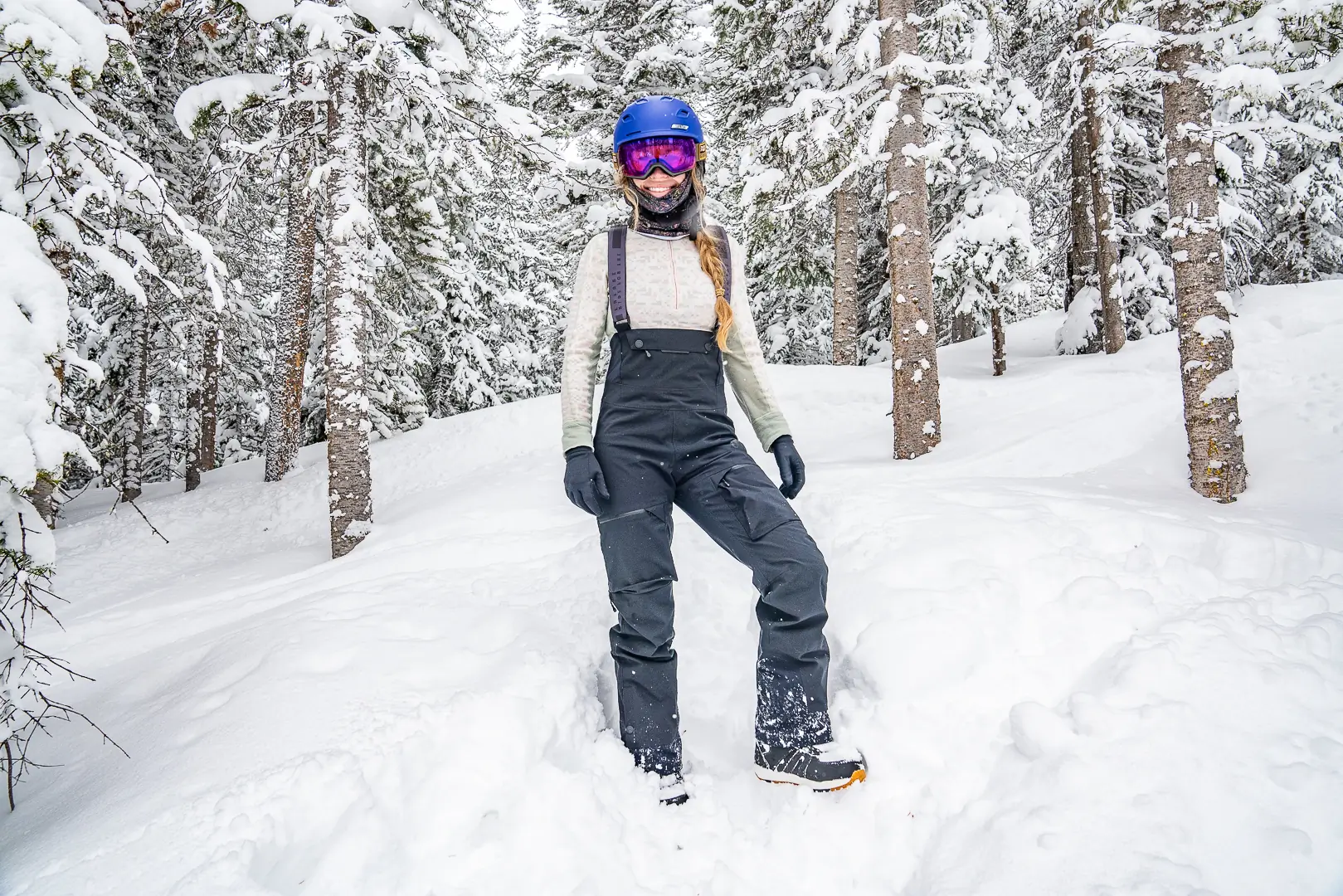



How We Tested the Best Base Layers for Women
The GearJunkie product testing team includes a range of skiers and snowboarders from intermediate to expert who explore ski areas around the world, venture into the backcountry, skin uphill at the resort, après in the parking lot, and enjoy Nordic trails. We don’t shy away from winter runs and embrace the mantra “there’s no bad weather — only bad clothing” when it comes to playing outside in the depths of winter.
Our team includes avid hunters and folks who live in wintry, cold, mountainous locations from Bozeman, Montana, to Crested Butte, Colorado. We backpack, alpine climb, hunt, and track elk in the fall shoulder season. In the spring, we go ice climbing and mountaineering. The first iteration of this guide was authored by Senior Editor Morgan Tilton in 2019, following extensive field tests.
To narrow down the top 10 base layers on the market, she heavily researched, coordinated, and dispersed base layers to a diverse group of outdoor professionals and athletes nationwide, who reported detailed findings in addition to Tilton’s personal field tests in Colorado. Since then, this guide has evolved through eight published updates as of September 2024. Today, the guide highlights 14 tested product collections that represent the best of the best base layers for women.
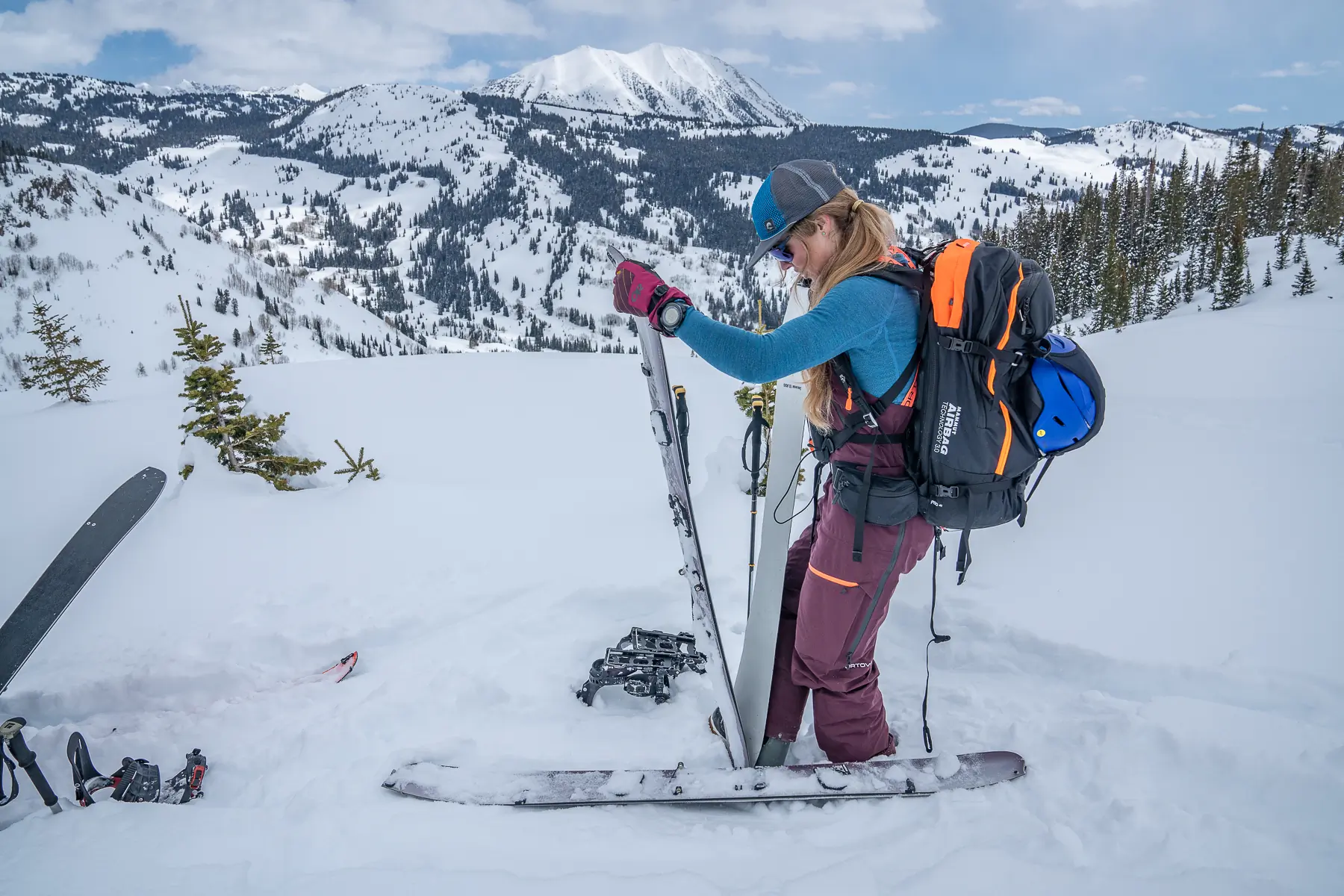



Our Expert Testers
GearJunkie Senior Editor Morgan Tilton specializes in snowsports and manages the majority of the publication’s winter guides, including Base Layers for Women, which has been on her edit desk since 2022. Raised in Telluride, Colo., she grew up playing at Telluride Ski Resort and now lives in Crested Butte. She’s worn a ton of base layers over the past three decades — and the ladies’ designs really do keep getting better.
As an outdoor industry journalist, Tilton has covered winter gear for more than 13 years, including reporting for the Snow Show Daily, and serving as Snowboard Editor at Teton Gravity Research. She’s Wilderness First Responder certified, has completed AIARE recreational avalanche training, and finished the A3 Snowmobile Recreational Level 1 Avalanche Course with Silverton Avalanche School.
In addition to a sugar beet harvester and ski patrol tail guide, the contributing field testers for this guide include:
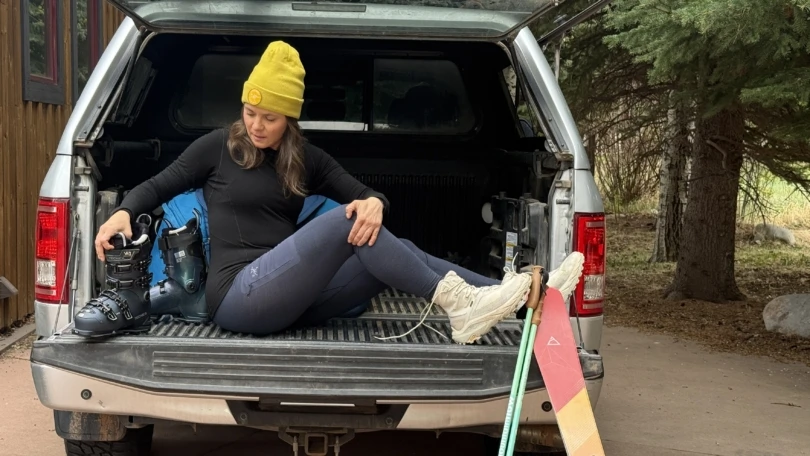



Our Testing Grounds
Tilton lives and primarily tests gear in Colorado’s Elk Mountains. She skis, snowboards, snowmobiles, and shovels unbelievable amounts. She’s also tested base layers on the blustery slopes of Eldora Mountain, foggy and icy days at Utah’s Snowbasin Resort, powder rounds at Telluride Ski Resort, and the backcountry of the San Juan Mountains. The majority of her inbounds gear testing takes place at Crested Butte Mountain Resort, a few miles away from her shoveling habitat.
In 2025, Tilton also tested base layers on backcountry lines at Baldface Valhalla in British Columbia, two days of riding at Canada’s Whitewater Ski Resort and RED Mountain Ski Resort, ski touring in Grand Teton National Park outside of Jackson, Wyo., and two very cold powder days shredding at Big Sky Resort in Montana.
Vélez tested base layers for women in the Sierra Mountains north of Lake Tahoe — at Palisades Tahoe and Heavenly Ski Resort. Rochfort tested base layers in Aspen, Colo., and on a 5-day continuous stint in Italy’s Dolomites.
While using these second skins, we adventured across North Dakota farmlands, up cracks in Utah’s Indian Creek, and throughout Colorado’s high-elevation peaks and limestone walls. Temperatures stretched from splitting cold at sunrise in the glades to scorching under the sun during fieldwork.
In spring 2022 and 2023, Crested Butte Mountain Resort was the host location for the GearJunkie Ski and Snowboard week, where our team met to test goods.
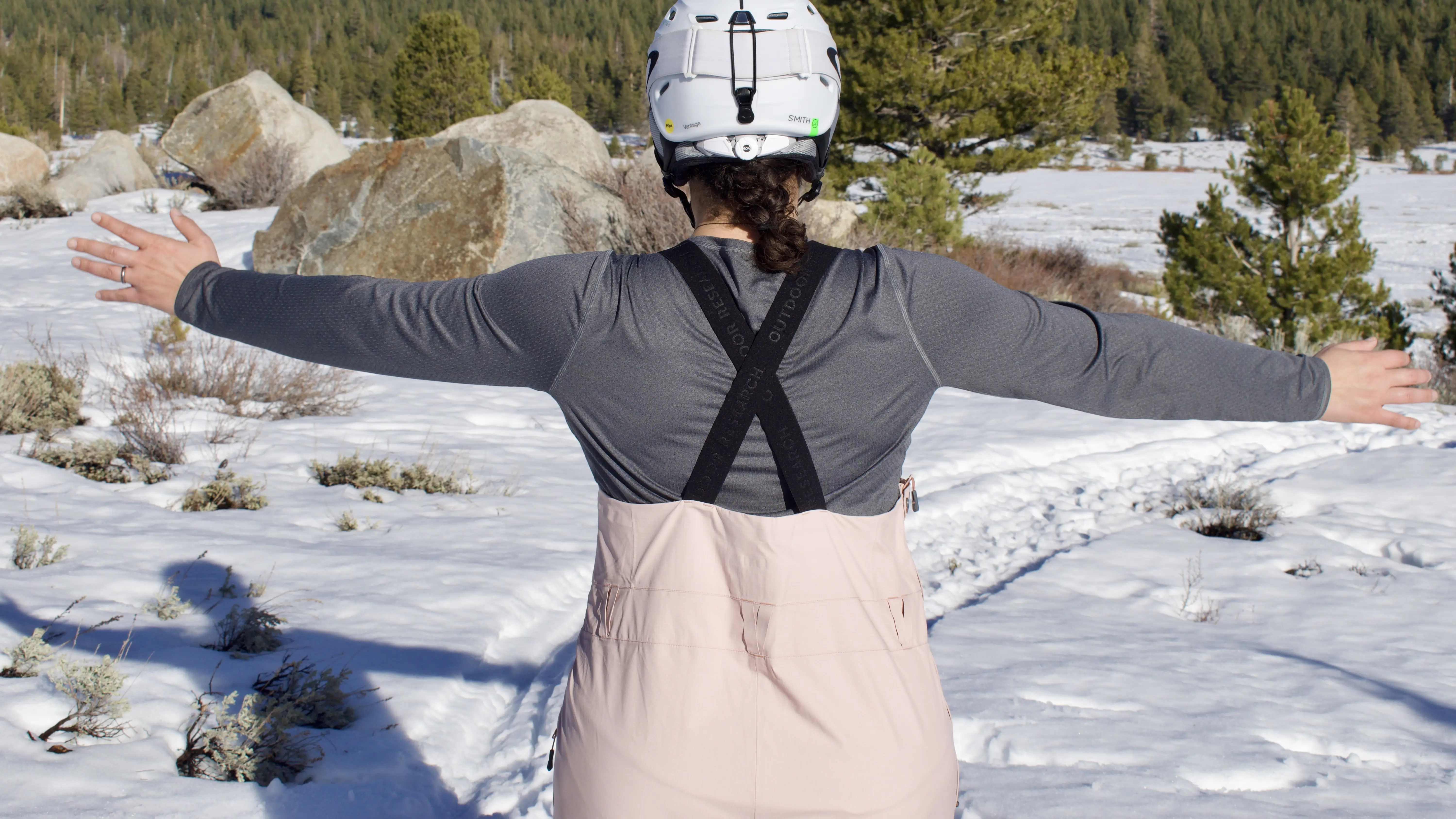



Our Testing Process
Our team field tests all of the women’s base layers that are included in this guide including input from plus-size athletes. For our reports, we also attend plus-size apparel panel presentations, interview the plus-size base layer designers, and research consumer trends.
While we team up with many gear testers, Tilton puts goods to the grindstone between keyboard blocks. To date in 2025, Tilton has packed in 44 days and 165 hours of testing women’s base layers. In 2024, she tallied 265 hours and 78 days of field tests. From January to December 2023, Tilton tested women’s base layers across 68 days and 198 hours of recreation — including blizzards, sub-zero temps, heavy and wet snow, plenty of perspiration, and sunshine. Her outings took place in the frontcountry and backcountry including via snowmobile. But that metric excludes shoveling responsibilities.
Environmental journalist Kylie Mohr runs and skis in Montana in various and blustery conditions. She wore these base layers in and out of bounds to see what most kept her warm and dry. Avid snowboarder and Utahan Julia Spadaro spends her winters at the resort and splitboarding in the backcountry, as well as hiking in the shoulder seasons. She tests women’s base layers throughout her adventures and delivers knowledgeable reports on what she does and doesn’t like.
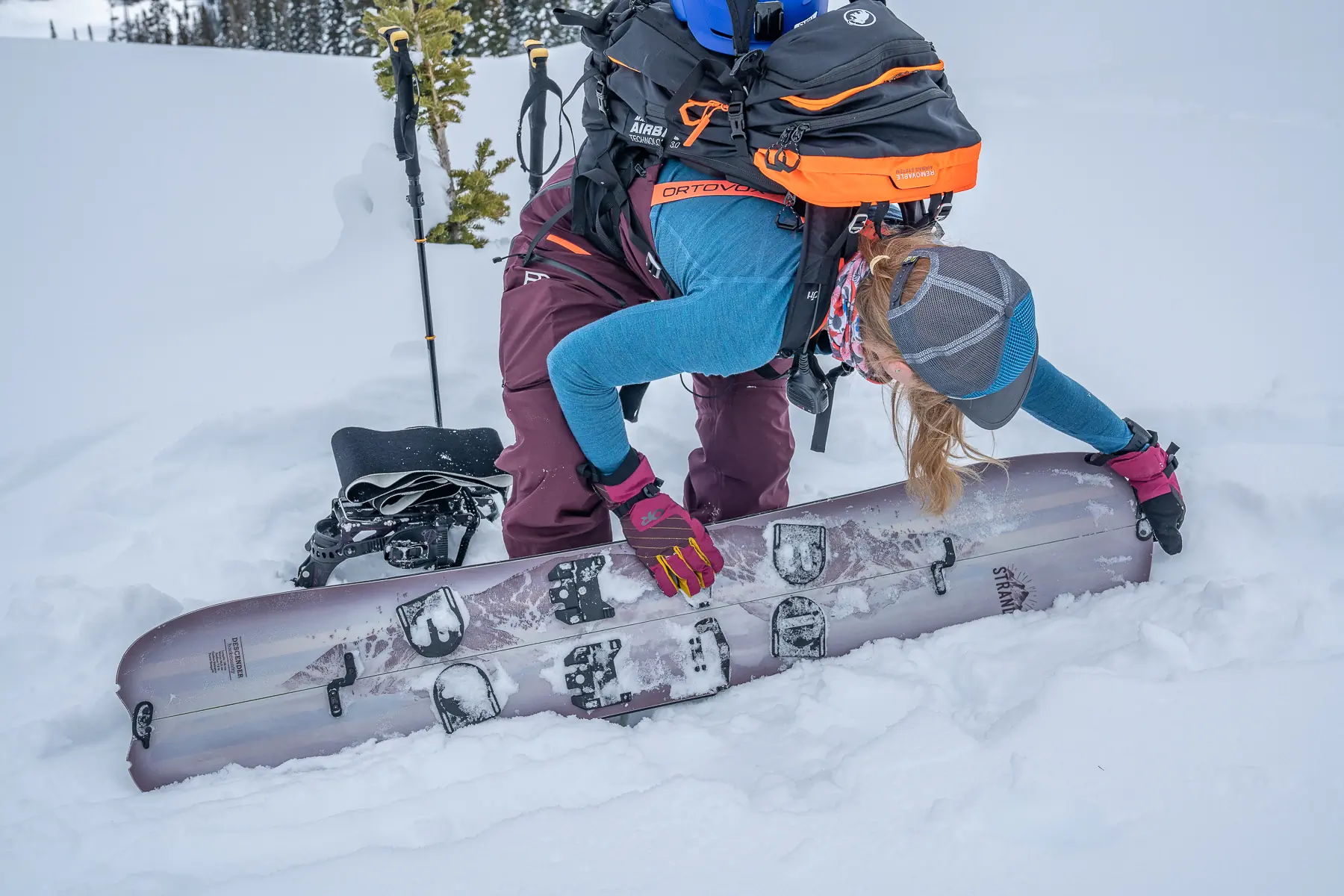



Testing Metrics
Throughout our field tests and personal experience, we determine the most competitive women’s base layers based on a variety of metrics including quality, comfort, fit, longevity, and value. We take a close look at each product’s warmth, breathability, wicking and drying capability, material, elasticity, stretch, weight, density, seams, hems, cut, hand feel, and style.
We also consider the most innovative, sustainable, legacy, award-winning, and popular designs on the shelf today. Hands down, these women’s base layers serve a wide range of athletes, applications, and budgets.
Our Base Layers for Women Rating System
We score each set of base layers for women on a 1–10 scale for Warmth, Tightness and Elasticity, Odor Resistance, Quick-Drying.
- Warmth in a base layer hinges on the textile (wool, synthetic, hybrid). It also depends on the fabric weight (lightweight, midweight, heavy weight) and density: gsm (grams per square meter). We test every base layers set against the intended insulation value.
- Tightness and elasticity examines the snugness and rebound. Some layers are stretchier or looser than others while certain designs have more compression and zero shift. Elasticity helps layers retain their shape through use and over time, increasing durability.
- While considering odor resistance, we take into account how well the fabric masks our B.O. during workouts. Wool naturally resists odor. Synthetic materials can be treated with antimicrobial finishes to help squash odors. If a synthetic layer is not treated, it can’t block odors, and the score is zero.
- A fabric’s ability to be quick-drying is important when we’re working up a sweat on the skin track or during powder laps at the resort. We don’t want to sit in our sweat in cold temps. Synthetics generally dry faster than wool — but wool adds warmth when wet. The lighter weight a fabric is, the faster it dries. Integrated mesh panels or perforations help increase the fabric’s drying speed, too.
The Overall Rating is based on contextual, editorial judgment, and the complex user experience across various scenarios and conditions.
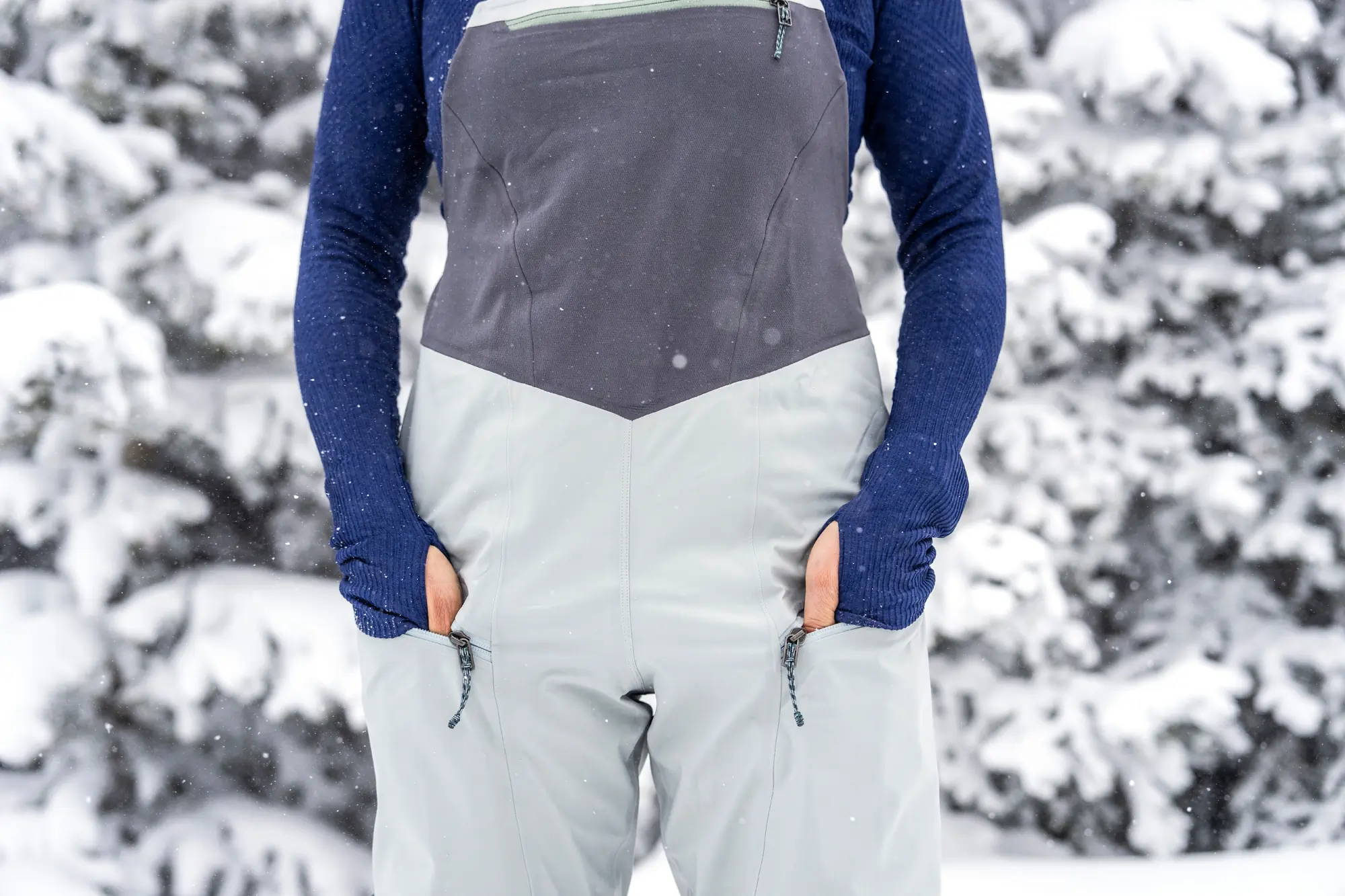



Buyer’s Guide: How to Choose the Best Women’s Base Layers
In our guide, we focus on the best options for cold weather and the winter season, which are often long-sleeve tops and ankle-length bottoms.
Technically, women’s base layers feature a range of designs, including tank, long-sleeve, and short-sleeve tops, as well as ankle-length or capri pants. Some tops feature a hood, partial zipper, or thumb holes. Others are tailored with a crew collar, mock neck, or turtleneck. While most against-skin layers lack pockets, we’ve seen leggings popping up with a spacious side pocket, which is useful to stash a phone, especially post-activity when you pull off your snow pants.
Two fundamental umbrellas will help you decide which women’s base layers to buy:
- You’ll want to consider how cold the climate is where you play outside. The colder the zone, the more you’ll want to consider a wool-based blend, higher-density fabric, and heavier fabric weight.
- The second variable is how active you’ll be while you’re wearing that apparel. During exercise, like shoveling or going on a winter run, your body is generating heat that would necessitate a more breathable, less density, low-weight top and bottom.
If you plan on being physically active in above-freezing but cool weather, we recommend a synthetic blend. If you’ll be rounding out winter days in a below-freezing climate, wool can be your greatest companion for warmth. Other factors can influence the best base layer choice, including your body’s circulation, skin sensitivity to fibers (like wool), and the layers you put on top.
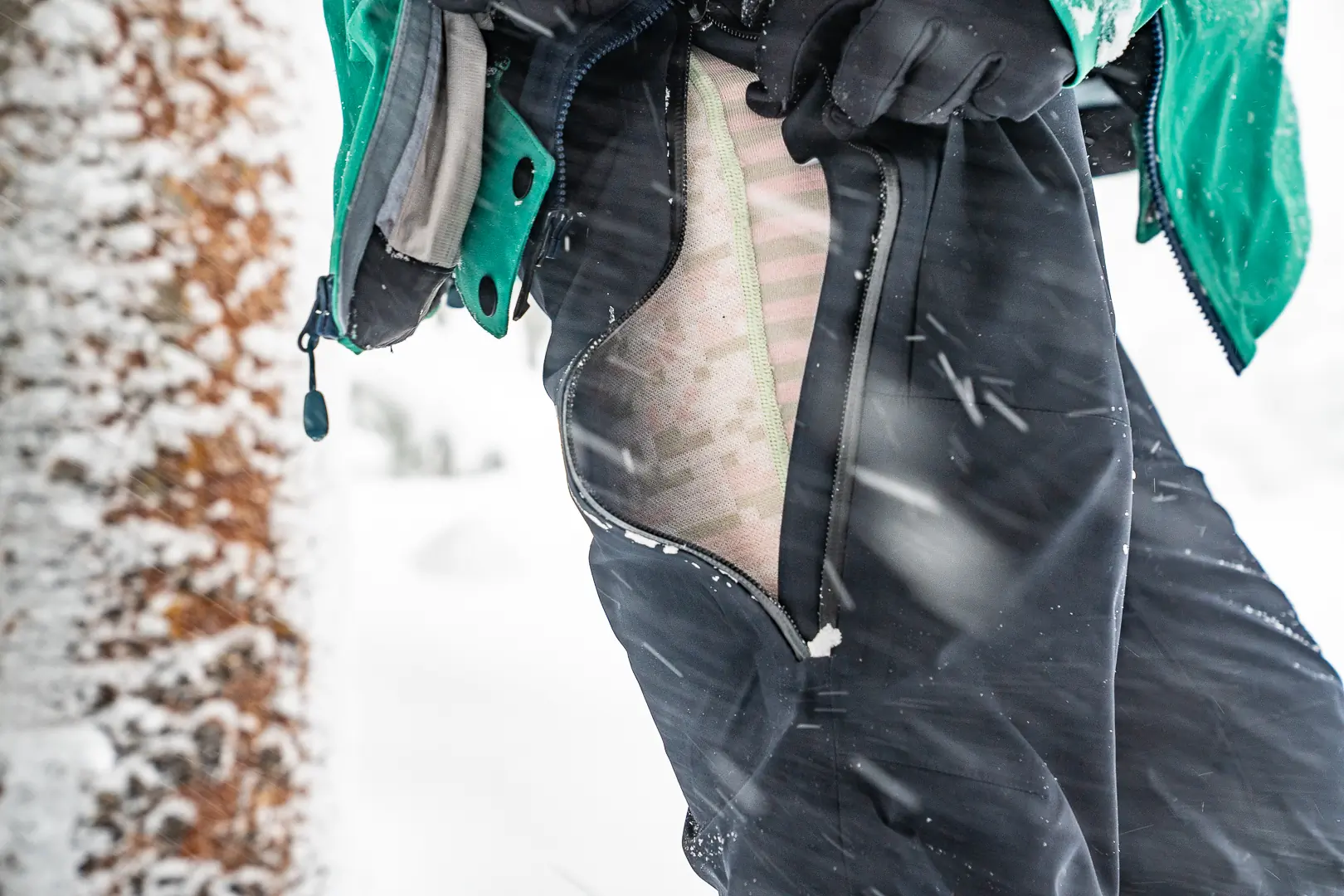



Layering System
Your alarm goes off. Don’t snooze: It’s time to get up and dressed for cold weather fun. Your layers will work in a tiered system:
- Base layer: Next to skin to wick sweat
- Midlayer: Adds warmth to retain body temperature
- Outer layer: Protection from the elements, repels precipitation, blocks wind; insulated outer layers increase warmth
First, put on your underwear and socks. They better be wool or a synthetic blend — not cotton. Your warm, dry epidermis will thank you. Your base layers go on next.
Base Layer
Add your base layer top, bottom, or onesie. If your bottoms are long, make sure they go over your socks. Unless you like your socks on the outside of your bottoms — that’s personal preference. If your bottoms are mid-shin length, like some compressive performance options, adjust your socks and fabric, so there aren’t any overlapping, uneven points that could rub or chafe.
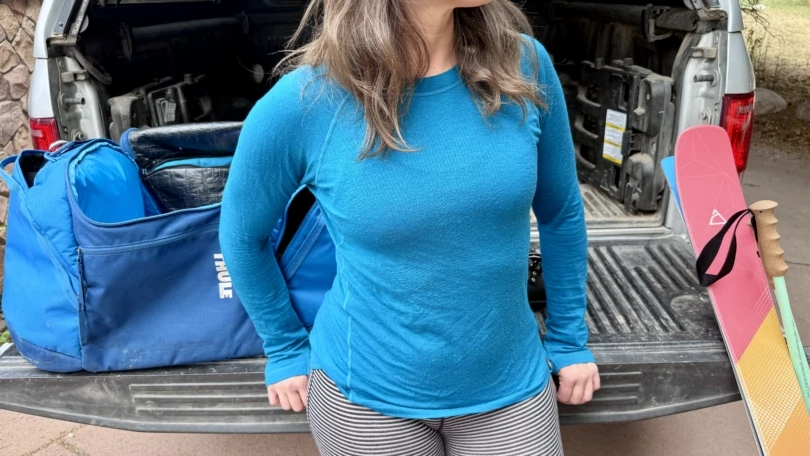



Midlayer
Now, it’s time to slip on your midlayer top and bottom, depending on the day’s activity.
Going skiing in bounds? Reach for a streamlined fleece that still allows a full range of motion. Hanging out at the campsite? Pull on a bulky deep-pile fleece.
Your activity will dictate what appropriate midlayers to add on the bottom. Maybe you’ll pull on a fleece or insulated puffy pants for extra warmth below workwear trousers or snow bibs.
Outer Layer
Headed to the backcountry? Wear a comfy insulated jacket on the way to the trailhead then strip down to your baselayer or midlayer to start, given you’ll quickly warm up from exertion in the cold temps. Running in a breeze on an otherwise warm afternoon? Go for a softshell with no insulation.
If we’re resort skiing in below freezing temps, and we run cold, we’ll often do this trio: an uninsulated ski shell over both a fleece and puffy jacket. Insulated jacket wearers will likely find they don’t need all three.
An ideal layering system is all about learning what works for you and how many layers you need to stay warm and dry.
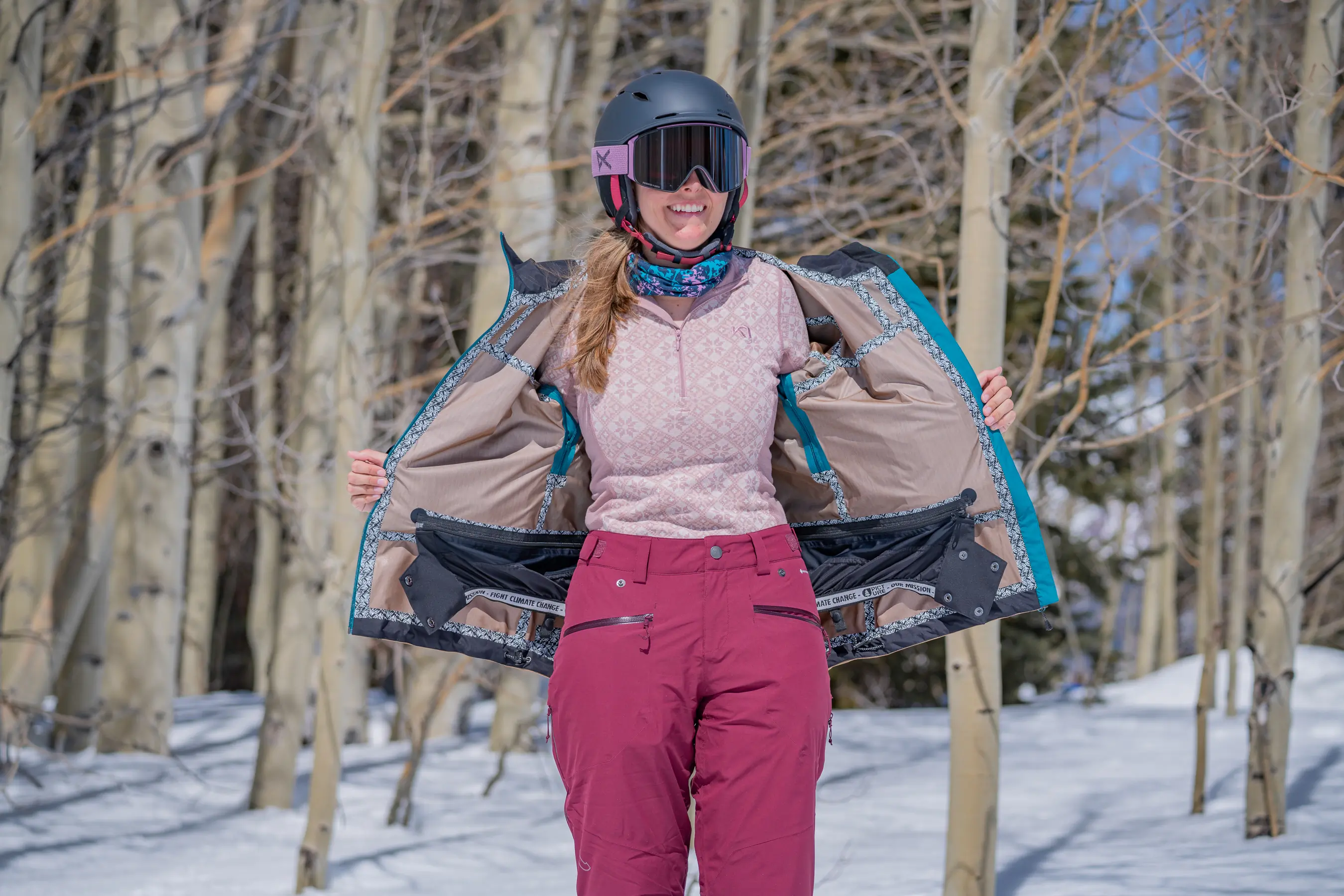



Fabric Blends
The fabric blends of women’s base layers include wool, synthetic, or a blend of the two. Within those fabrics, there are various densities from lightweight to midweight or heavyweight.
Wool
We love wool. It regulates temperature really well and provides warmth when it’s damp or wet. It’s evolved to be much more comfortable against the skin and resists odors like a champ. The warmth-to-weight ratio is high, packing a punch in a fairly light package. It’s an ideal choice for low-intensity outdoor activities like ice fishing or spectating a hockey game. Among our top base layer choices are the Smartwool Women’s Classic Thermal Merino Base Layer Crew and Smartwool Women’s Classic Thermal Merino Base Layer Bottom, a 100% Merino wool collection.
That said, 100% merino wool tends to be less stout than synthetics, wears holes more quickly, and can get baggy throughout use. If you have sensitive skin, even the smoothest 100% merino wool might feel a tad less than cloud-like next to the skin. Wool gets heavier when it’s wet and doesn’t dry as fast as synthetics. Depending on your preference, activity level, and the weather conditions, you might prefer a wool blend or straight synthetic materials.
Wool can cost more than its counterparts. Beyond merino-sourced wool, we have tested base layers with wool from yaks, which was a premium thread, extremely soft, and super insulating.
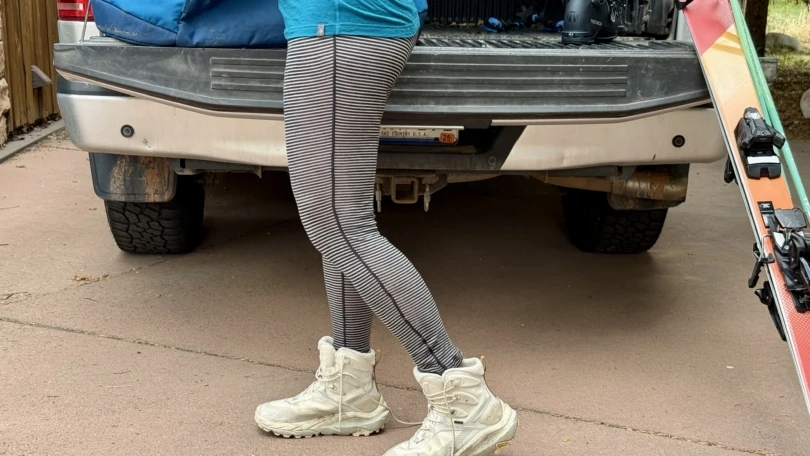



Synthetic
An alternative to wool is a synthetic fabric, which is typically a blend that includes polyester plus elastane or spandex for rebound, form, and long-lasting use. Some synthetic fabrics are proprietary to a brand with treatments that enhance their odor-fighting ability and moisture-wicking prowess — the qualities that occur naturally in wool.
Synthetic blends do not offer as much warmth and overall temperature regulation that wool provides. Because they don’t absorb as much moisture and they dry fast, they’re a great choice for high-intensity activities that produce a lot of perspiration without long moments of standstill, like during a hunt, when a chill could set in.
These fibers can work really well for people with sensitive skin, especially for exercise use, and the bonus of greater durability, stretch, and elasticity. Also, synthetics typically cost less than wool. One of our favorite synthetic options is the REI Co-op Lightweight Base Layer Tights Women’s Plus Sizes, at a whopping $40.
One drawback: Odor-intense days are not typically covered up well by this fiber in its naked form.
Wool-Synthetic Blend
Many folks find a fair balance of managing heat and chill, sweat absorption, and covering up odors in a design that weaves together both wool and synthetic fibers. Adding synthetics to blends can enhance the strength and overall lifespan of wool apparel.
One of our all-time favorites for wearing from the skin track to happy hour is the Le Bent Women’s Core Lightweight Crew Base Layer, which includes 5% elastane and maintains a nice shape throughout long days.
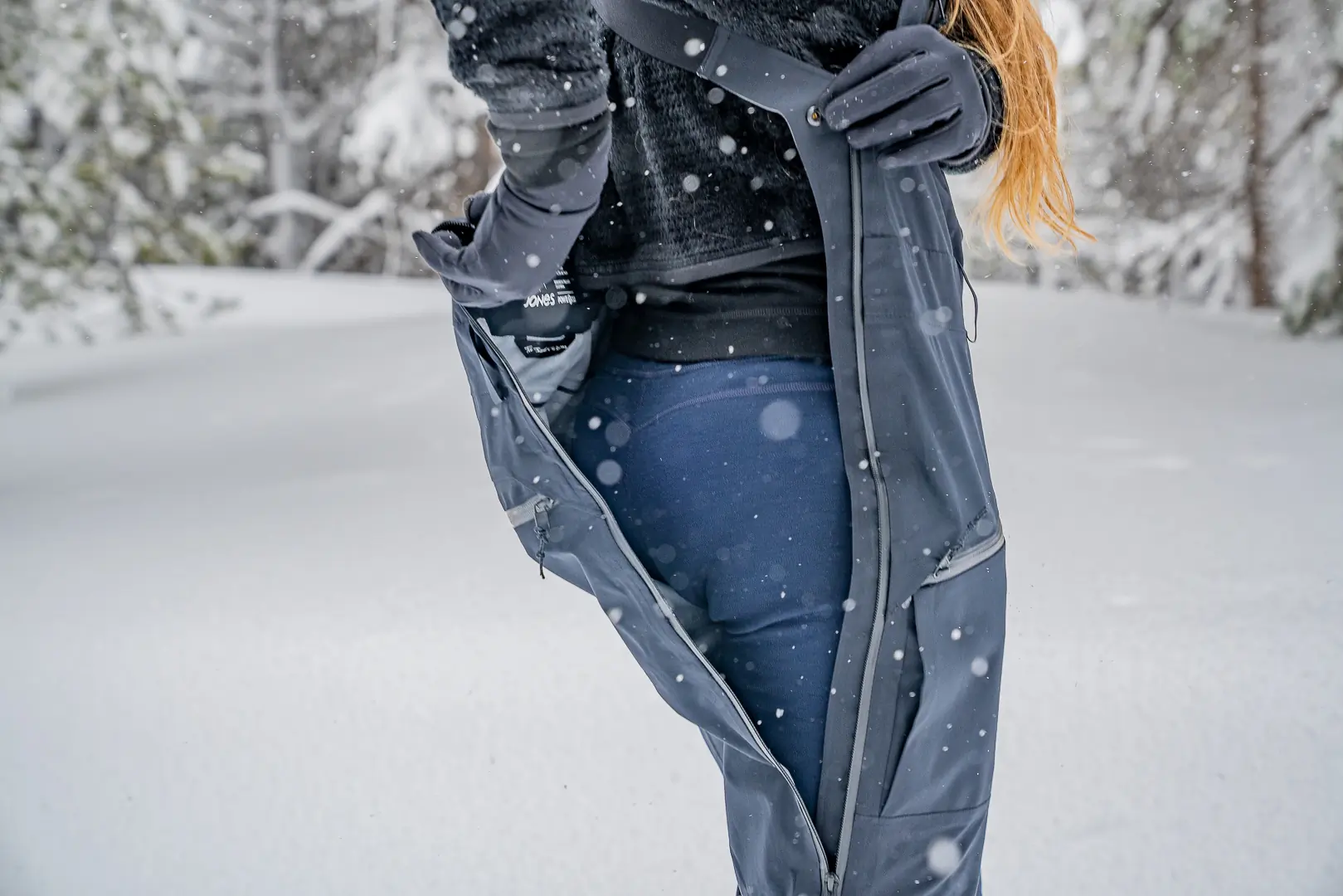



Weight Class or Thermal Category: Lightweight, Midweight, Heavyweight
When you shop for women’s base layers, the products are categorized by three weight zones, which generally refer to how heavy or light the layer is and feels. The weight class is influenced by the fabric density and thickness, which changes the activities that the layer is compatible with.
Here, we listed the weight class in each product’s specs — under Thermal Category — which is based on our test results.
Weight class isn’t directly correlated to warmth. A lightweight, pure wool top can bounce back a ton of body heat. It will be easier to move in, less dense, and more breathable than a midweight or heavyweight wool design.
While everyone’s circulation and preferences are different, here’s a general starting point for deciphering a weight class based on activity level and outdoor temperature:
Sedentary
- 25-32+ degrees: Lightweight, wool
- 15-25 degrees: Midweight, wool
- <15 degrees: Heavyweight, wool
Active
- 25-32+ degrees: Lightweight, synthetic
- 15-25 degrees: Lightweight, wool-synthetic
- <15 degrees: Midweight, wool


Lightweight
If you’re running hardpack snow trails, snowshoeing, skate skiing, or doing uphill ski workouts in 30-degree temps, a lightweight base layer top or bottom should do the trick, as long as there’s no wind chill.
Lightweight layers dump heat really well. These could be a good piece for warmer spring laps at the ski resort. But sitting idle on lift rides in cold temps typically calls for a warmer midweight base layer. One of our favorite lightweight synthetics is the Helly Hansen Women’s HH LIFA Long-Sleeve Crew Base Layer, and a lightweight wool blend that’s super soft and versatile is the Le Bent Women’s Core Lightweight Crew Base Layer.
Midweight
Not too airy and not too stuffy, the midweight base layer is optimal for wintry days skiing and riding at the resort. It’s a good choice for snowmobiling, when pulling the throttle can pack windchill at high speeds.
That said, for intense heat-building activities like huge ski or splitboard tours or snowshoeing, a midweight layer might be too much unless the temps are colder, like 15 degrees or less.
Squarely midweight, we love the Smartwool Women’s Classic Thermal Merino Base Layer Crew and Smartwool Women’s Classic Thermal Merino Base Layer Bottom as a well-rounded kit for cold or below-freezing temps and days at the ski resort.
Heavyweight
When we’re talking extreme temperatures — 15 degrees with windchill to well below freezing — then your best bet is a heavy-set base layer, especially for ski resort laps when you are sedentary on the way up.
Other more passive outdoor activities could include ice fishing, sailing, hunting, spectating events, hanging at base camp during a mountaineering expedition, or snowmobiling groomed trails, especially if sightseeing stops are frequent.
We don’t currently have any bulky heavyweight options in our guide. Many of our 100% wool midweight selects can be layered beneath a midlayer fleece and down jacket for super cold conditions, and we prefer that versatility. The Kari Traa Rose Half Zip Baselayer Top and Kari Traa Rose High Waisted Baselayer Pants feel lean but are packed with heat. These are our go-to on a 0-degree day at the ski resort. We don’t usually like wearing these while we ski tour to avoid an oven effect.
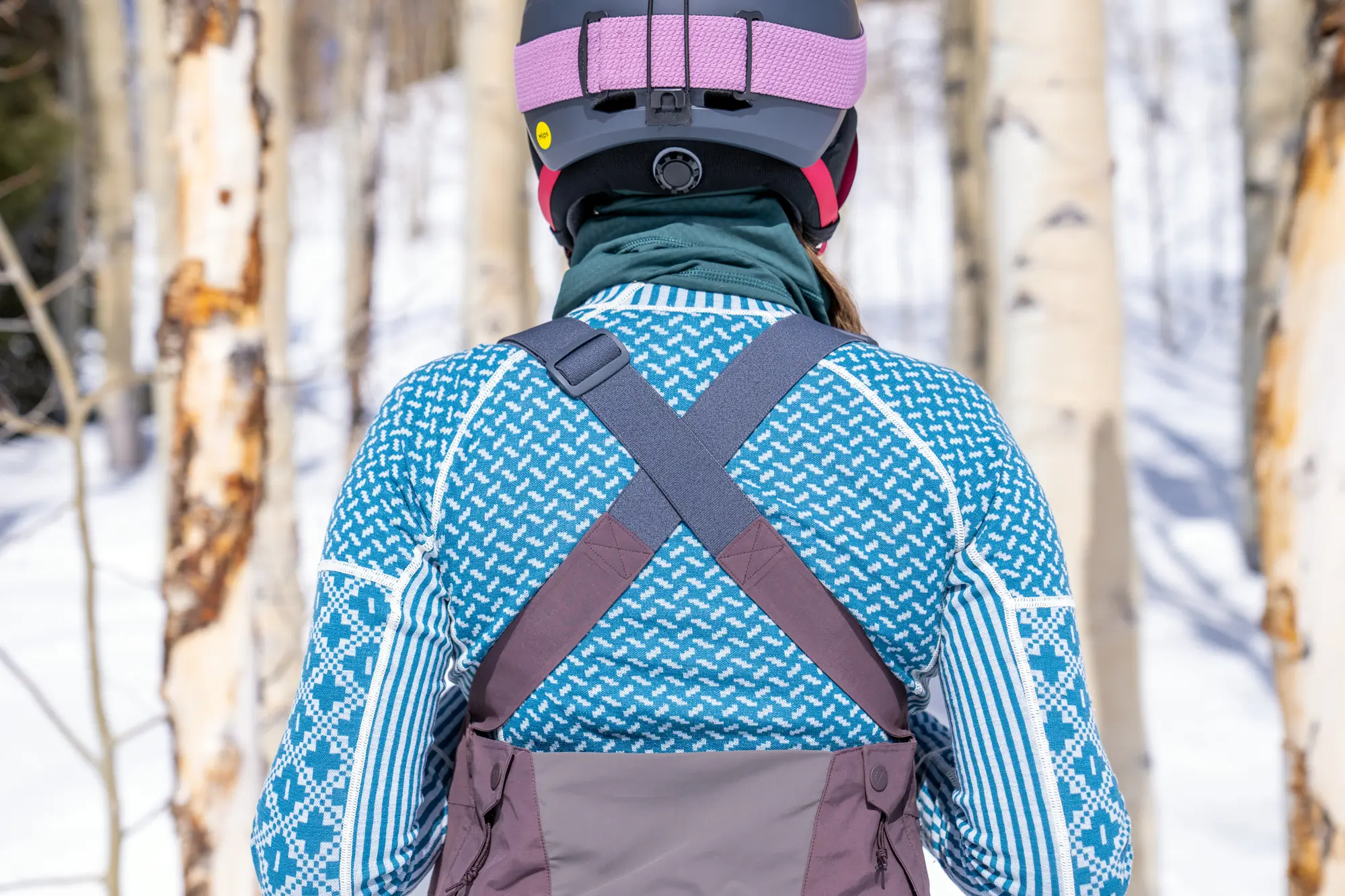



Fabric Density
A standard unit for measuring fabric density is gsm (grams per square meter). The higher the gsm, the denser and warmer that textile will be. A fluid-feeling blouse might be as low as 50-100 gsm, while denim reaches into the 340-450 gsm range.
Some women’s base layers do not weigh much but have a dense fabric or high gsm. Therefore, they swing a high warmth-to-weight ratio, such as the Kari Traa Rose High Waisted Baselayer Pants with 240 gsm. After testing, we associated that legging as midweight, thanks to the relatively low density yet high heat punch.
Rather than adding gsm labels to our product reviews here, we shared the general weight class — lightweight, midweight, and heavyweight — which is more ubiquitously used across brands. Our listed weight class is based on our test results. That said, understanding how to interpret the density of a base layer is a very useful tool.
Here’s a broad rule of thumb for gsm:
- Ultralight base layers: >150 gsm
- Lightweight base layers: 150-195 gsm
- Midweight base layers: 195-250 gsm
- Heavyweight base layers: 250-320 gsm
You’ll want to match your physical exertion or circulation to the fabric density. If you plan to do high cardio activity, choose a base layer design with a lower density.
If you plan to be more sedentary — such as waiting in long ski lift lines during a blizzard, ice fishing, watching a hockey game, or running errands — opt for a higher gsm. A higher fabric density is also a good option for folks who have poor circulation or tend to get chilled during winter activities.
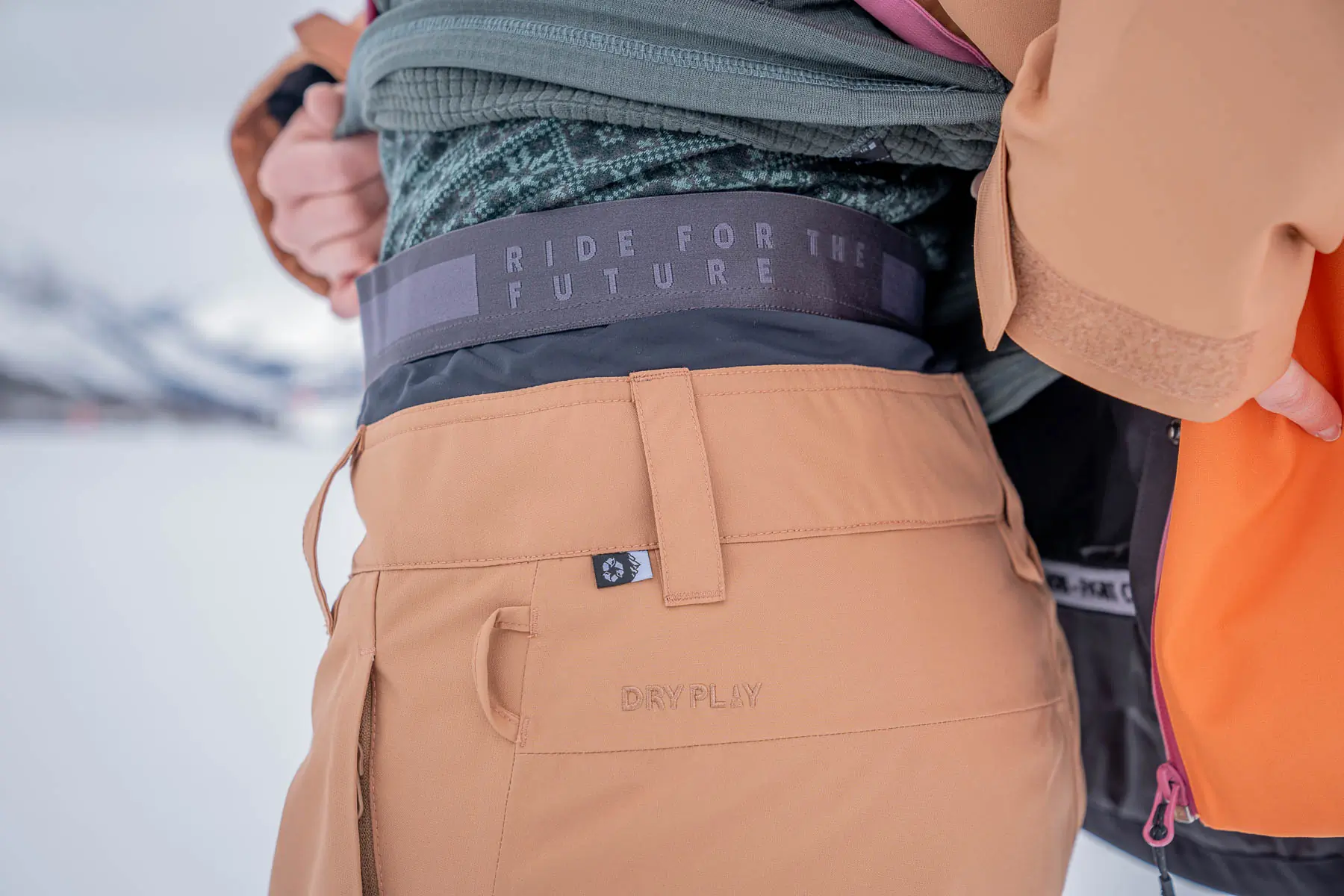



Breathability
In addition to trapping heat, it’s important for your base layer to breathe well and efficiently wick moisture. Freezing sweat will make you colder faster. Generally, the lighter or less dense a design is, the more breathable it will be. Merino wool is also more breathable than synthetics. Base layers can be made with a blend of materials that place more breathable textiles in high-heat zones.
When we’re talking about engineering, we can’t forget about the Icebreaker 260 ZoneKnit Long Sleeve Crewe Thermal Top and Icebreaker 260 ZoneKnit Thermal Leggings, which have a breathable mesh-like merino wool layer in all the important places — the lower legs, behind the knees, across the back and upper glutes, under the arms — so sweat can’t ruin the day. The Kari Traa Rose Half Zip Baselayer Top uses a lighter-density merino wool under the arms and along the sides, which feels more breathable.
In general, we found that the Smartwool Women’s Classic Thermal Merino Base Layer Crew is a warm winter layer that breathes pretty well. It’s our top pick for the dead of winter but also for alpine pursuits in fall and winter.
If you know you’re going to be busting it uphill on a warm day in the springtime, look for an even lighter and more breathable layer. Something like the Helly Hansen Women’s HH LIFA Long-sleeve Crew Base Layer or REI Co-op Lightweight Base Layer Tights Women’s Plus Sizes and Top will be a key part of your layering system.
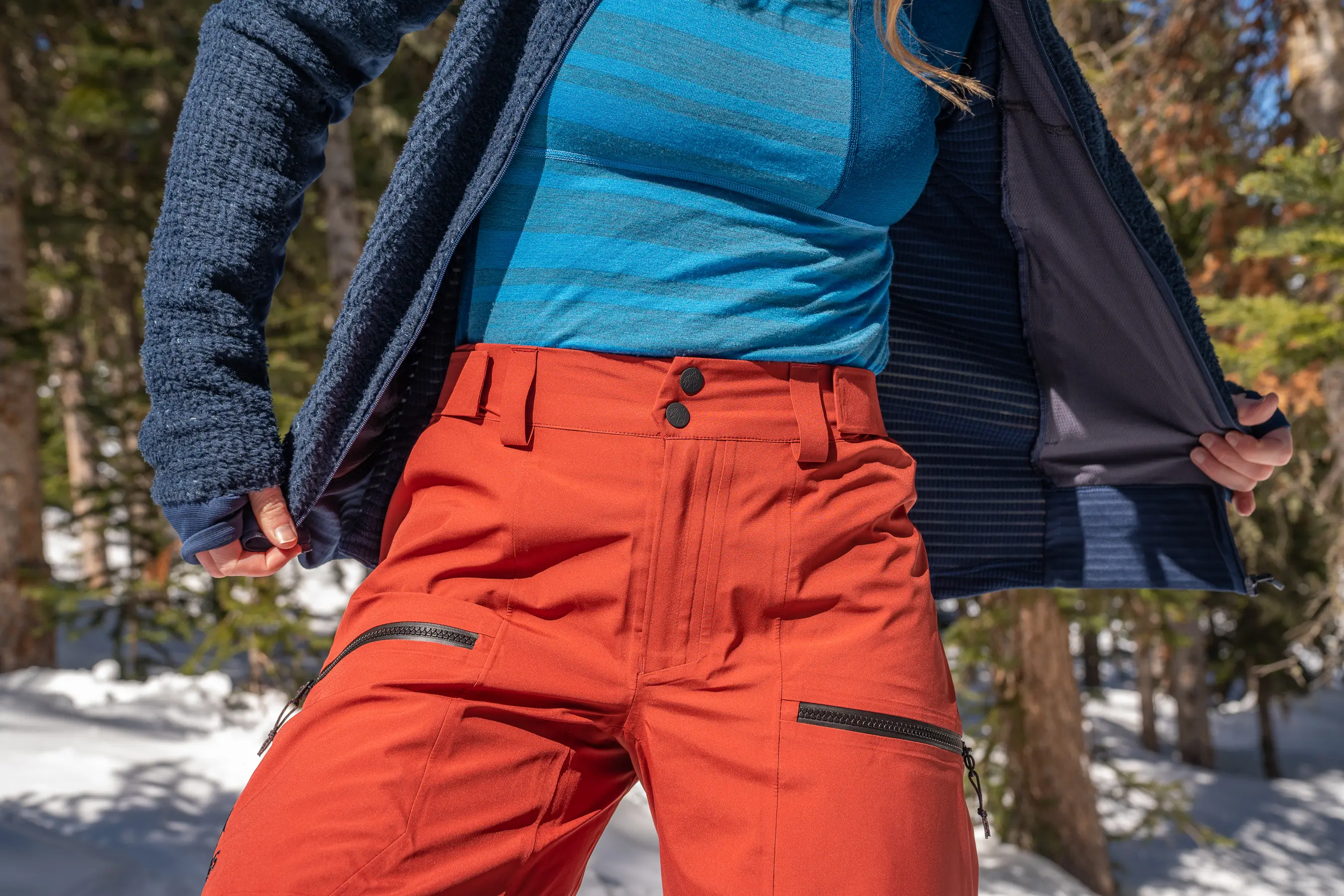



Odor Prevention
If you’re packing minimally for multiday use, like a hut-to-hut ski, merino wool does wonders with hiding odors. Generally, synthetic materials don’t resist odor as well as this natural fiber. Merino wool wicks sweat away from your body, allowing it to evaporate rather than sink into your clothes. Wool fibers absorb nearly twice as much water vapor as cotton and 30 times as much as polyester. The structure of wool binds with odors, playing keep away from bacteria.
Our Favorite Base Layers With Wool-based Construction
Anti-Odor Treatment
While polyester — a primary thread in synthetics — isn’t naturally odor-resistant, garments can be treated to mimic some of the same benefits as wool. Silver-based compounds and triclosan and triclocarban treatments are toxic to odor-causing bacteria, keeping the nose-pinch at bay. Keep in mind that these treatments’ effectiveness could decrease over time as a garment is washed.
Our Favorite Synthetic Base Layers With Anti-Odor Treatment
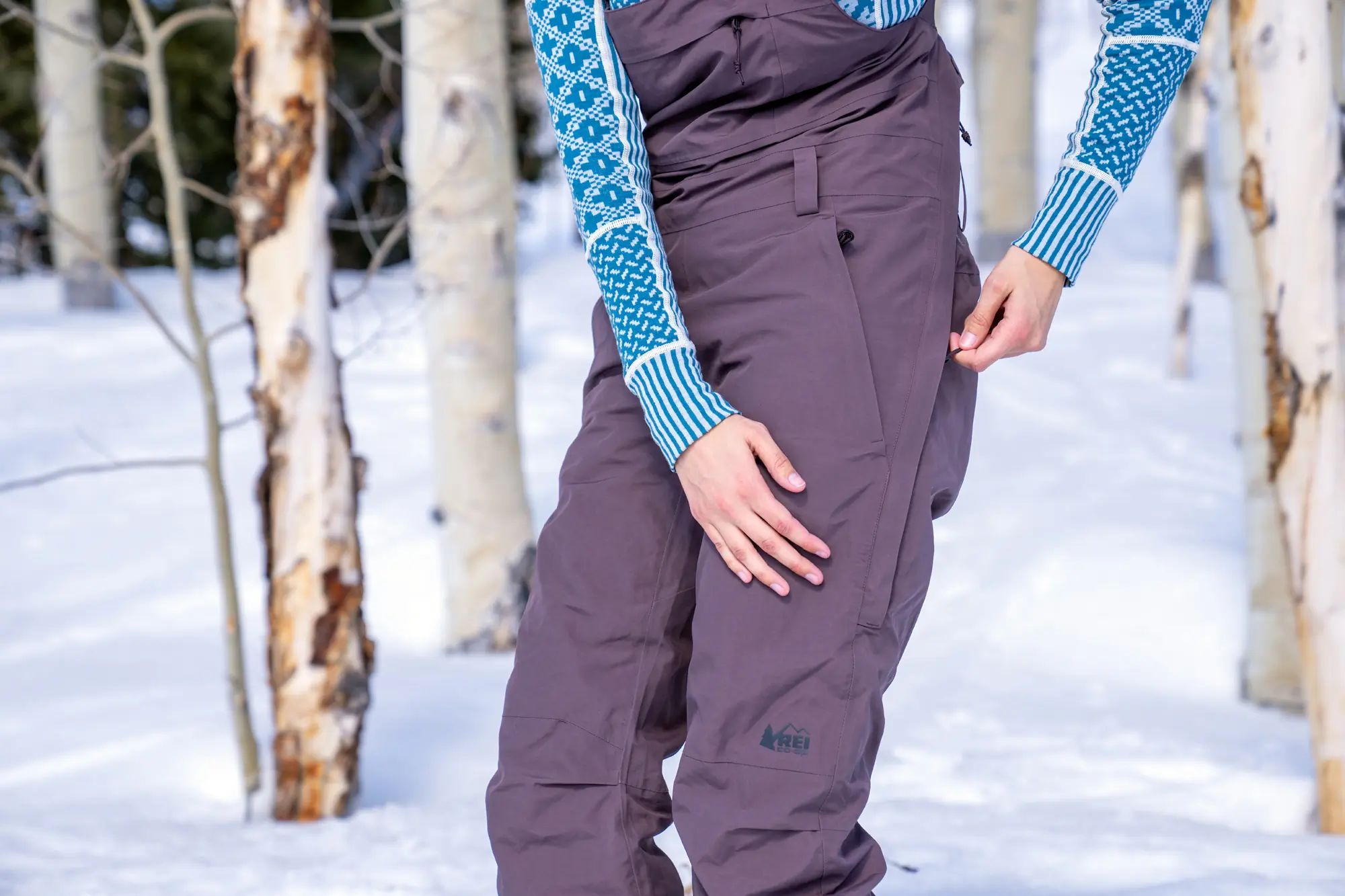



Sun Protection
Many base layers hidden beneath midlayers or outerwear jackets will never see the light of day. But others, especially lightweight ones geared for year-round or springtime use, will. That’s where sun protection is a nice added feature.
The REI Co-op Lightweight Base Layer Long-Sleeve Crew Top Women’s Plus Sizes boasts a UPF rating of 50+, as does the Le Bent Women’s Feathertop Ultralight Hooded Long Sleeve Tee. But Le Bent’s design also offers a hood, so you’re getting additional protection of your ears, plus the back of the neck. The Le Bent Women’s Core Lightweight Crew Base Layer likewise sports a UV 50+ tag.
Durability
Thermal layers are an investment, so it makes sense that you want them to last. They’re also only one piece of a long list of gear that’s needed to venture out in the winter.
Synthetic layers are often more steadfast than wool but can cause more trouble with retaining odors. Manufacturers often add synthetic fibers to their wool apparel to help increase the overall timestamp. Wool is naturally warmer and odor-fighting but tends to be more fragile. You’ll want to take care putting them on, as well as how you wash and dry them.
Hands down, the most durable construction among base layers we’ve tested is that of Voormi. In the brand’s proprietary process, in-house seamsters create their Dual Surface material, a precision-blended wool technology with a lean interior layer of fine micron-wool plus a portion of polyester and nylon. After several years of use, we don’t see holes surfacing in these layers any time soon.
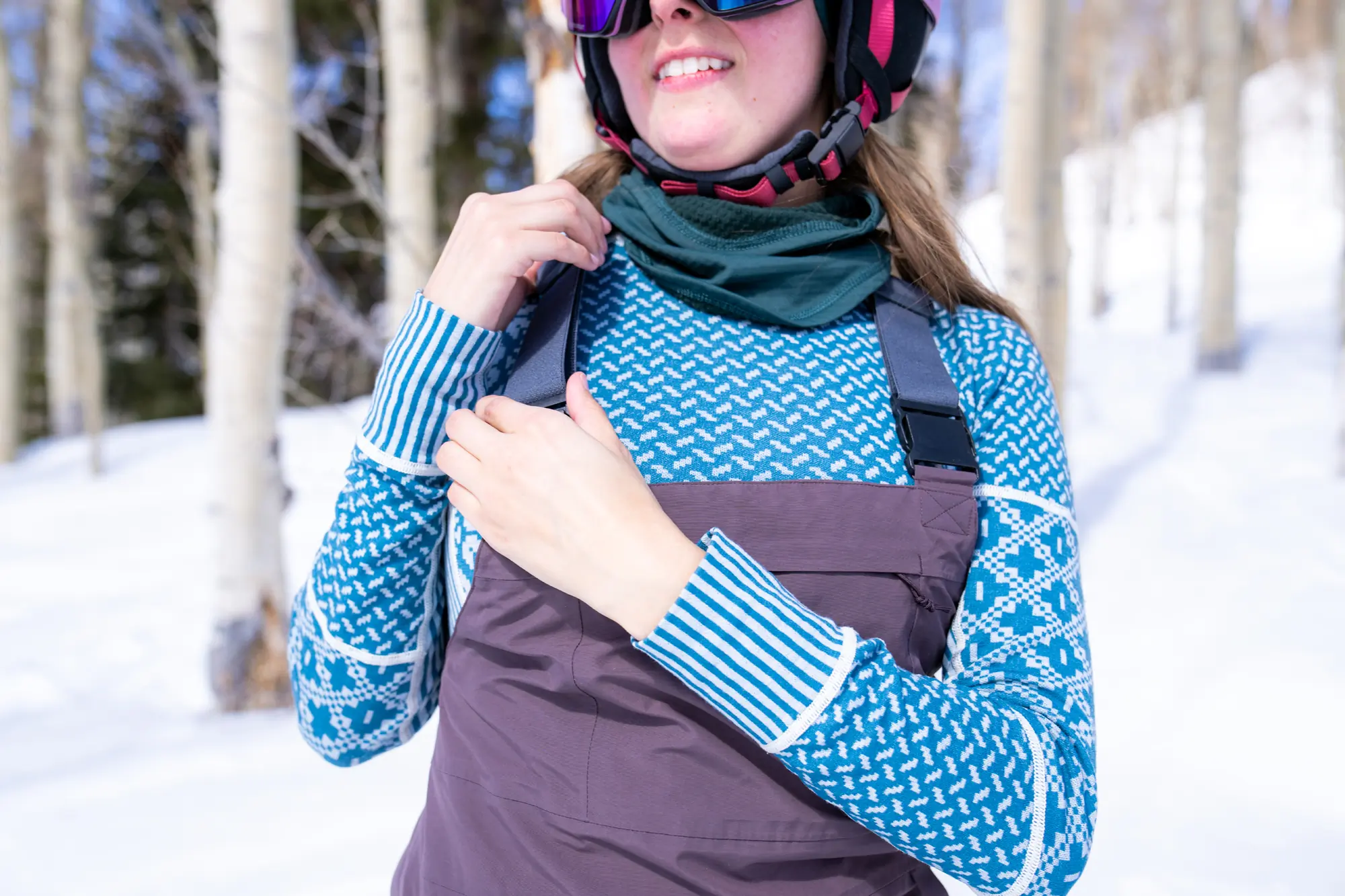



Comfort & Fit
Most base layers offer a degree of flexibility and are soft or nonabrasive, which supports overall comfort and fit. But some base layers we’ve tested in the past have had a tighter compression fit for optimal athletic performance.
The next most close-fitting design in our guide is the Halfdays Hallie Midweight Merino Legging, but it does offer ample stretch, even along the seams.
When we test base layers, we’re looking for tops that provide enough range of motion across the chest and shoulders, as well as when lunging or squatting. The seams need to be smooth or flat, and the gusset needs to be well-constructed so we don’t feel any jabs or experience chafing. The construction is very smooth across the Ortovox 185 Rock’N’Wool Short Pants and Ortovox 185 Rock’N’Wool Long Sleeve.
We care about the silhouette, because we prefer arms that at least cover our wrists and torso lengths that don’t allow the lower back to be exposed to the elements.
Pant Length
Most base layer pants reach down to your ankle but some capri styles hit below the knee, near the shin bone. We like a cropped length for easy layering with our socks and ski boots. The Ortovox 185 Rock’N’Wool Short Pants reach the knee and eliminate the need to layer our pants over socks.
Bottoms that reach closer to your feet are usually tapered and snug, so they can be easily tucked in when necessary. But there’s usually enough pliability in the fabric to slide your winter socks underneath if you prefer.
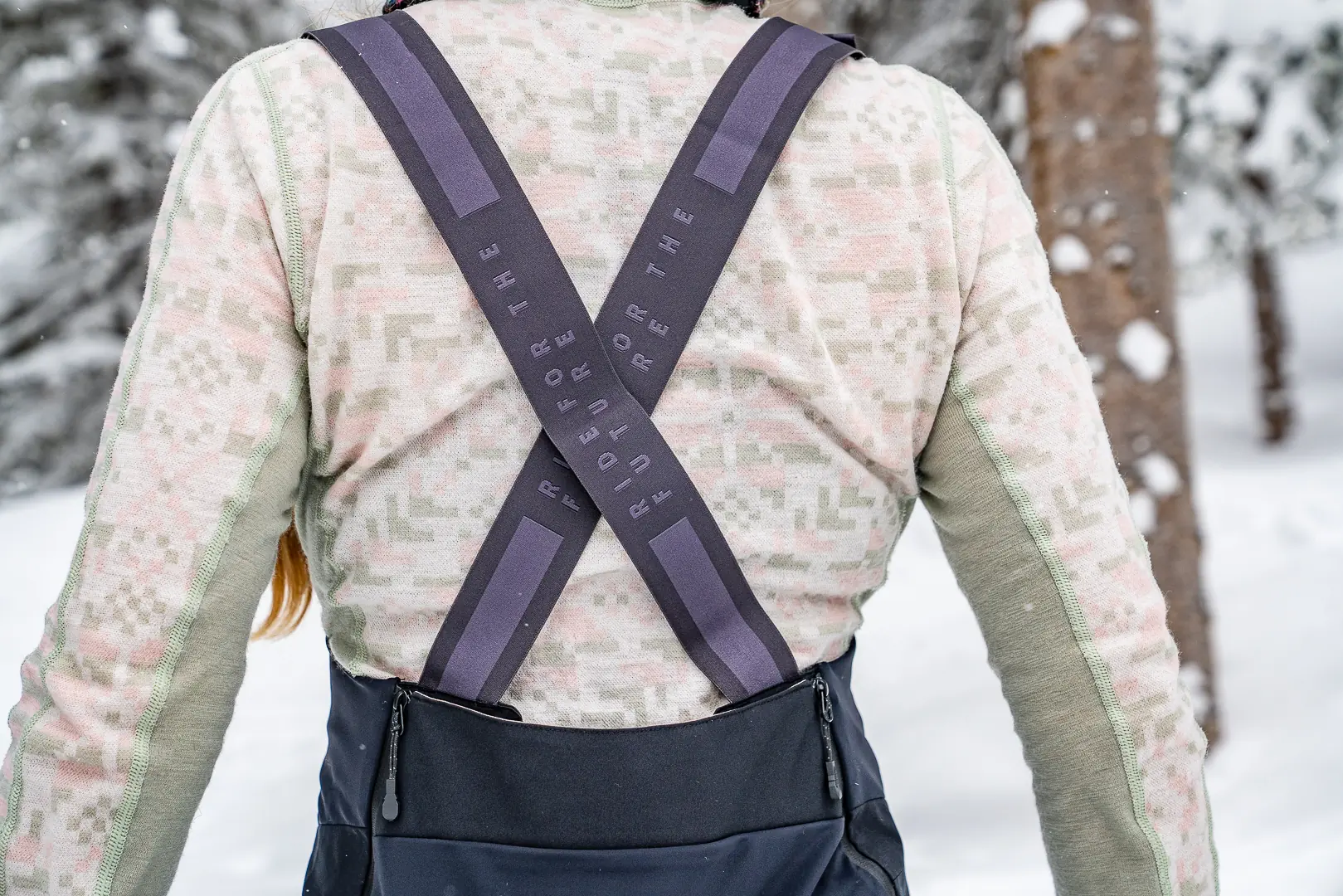



Onesie & Drop Seat
Sometimes a separate top and bottom just won’t cut it. We’re thinking about those best-of-the-season powder days where a gap in base layer coverage could lead to snow where the sun doesn’t shine. Base layers with a seamless connection are a rare, but increasingly popular, option in the base layer lineup. They’re called onesies or one-pieces that include a top and a bottom sewed together. Think wet suits and footie pajamas.
Leading the charge is the Wild Rye Olivia Onesie base layer. Wearers are treated with head-to-toe merino wool. A hood adds coziness, and fun patterns like chunky yellow florals stand out against your friends’ all-black arsenal. A half-zip helps regulate temperature on this warm, 230 gsm style.
The best feature on a onesie is a rear zip — or drop seat — for easy release. The drop seat is a removable backside flap, usually with zippers that span hip to hip above your booty, to make using the bathroom easier. No one likes having to get totally naked to answer nature’s call. Brr! Though we haven’t tested this one yet, the Backcountry Airblaster Merino Ninja Suit is another onesie option on the market.
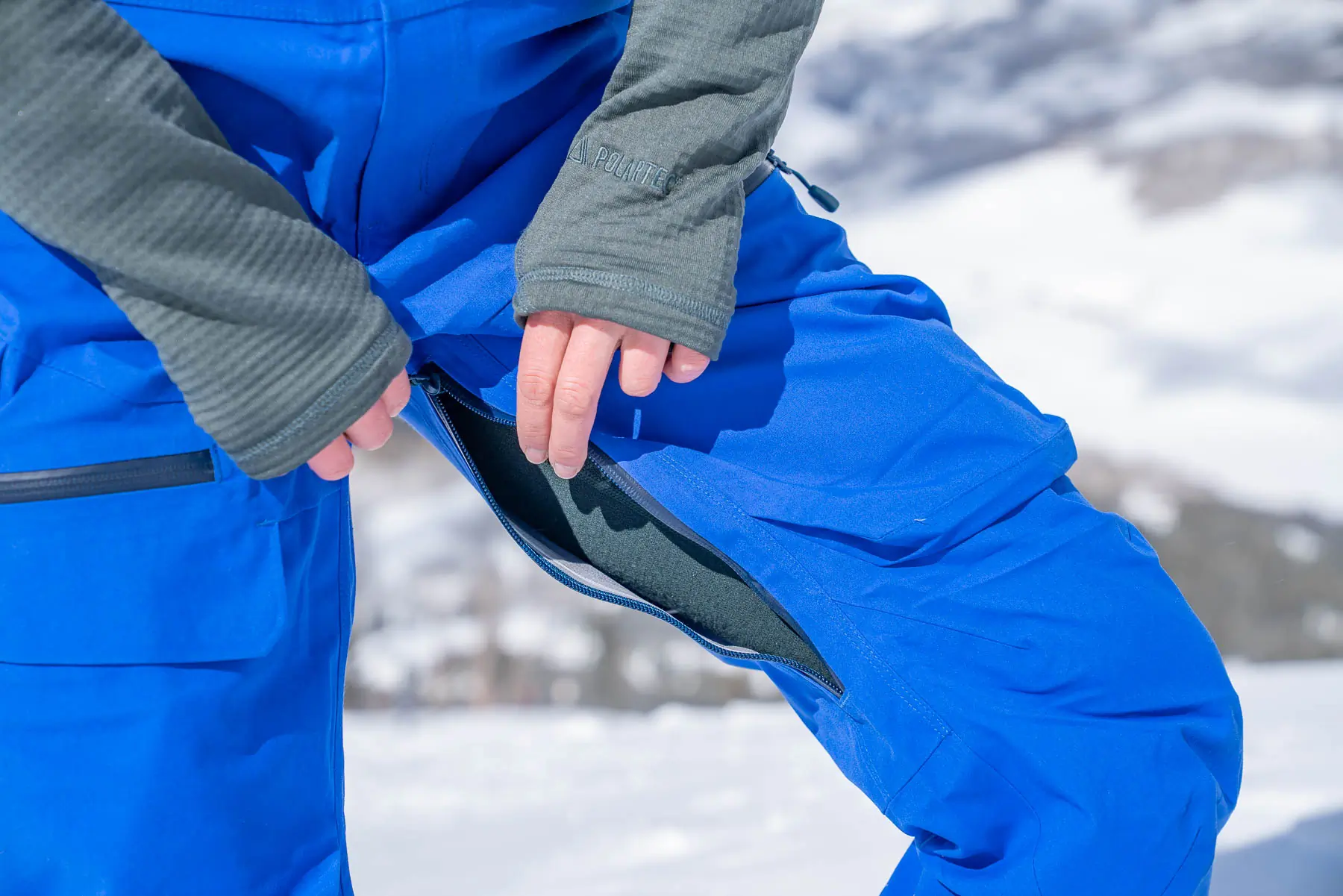



Hoods & Collars
Hoods are fairly rare on base layer tops. After all, how many hoods do you really want to be wearing at once? Hoods can sometimes add bulk around the neck and head area, especially if your base layer, fleece, puffy, and shell all have one.
But some of our favorite base layers rock a hood, like the First Lite Kiln Hoody and the Le Bent Women’s Feathertop Ultralight Hooded Long Sleeve Tee, which is superb for spring mountaineering and sunny, warm ski tours. It can be nice to have a slender hood around your neck to layer under a helmet or hat, which can further block the sun and wind.
Certain base layers have a scoop neck, while others have collars with a quarter- or half-zipper at the chest and décolletage. We like a mock turtleneck cut to fully protect our neck and chest without the restriction of a full turtleneck. The Kari Traa Rose Half Zip Baselayer Top combines a half-zip with a mock turtleneck.
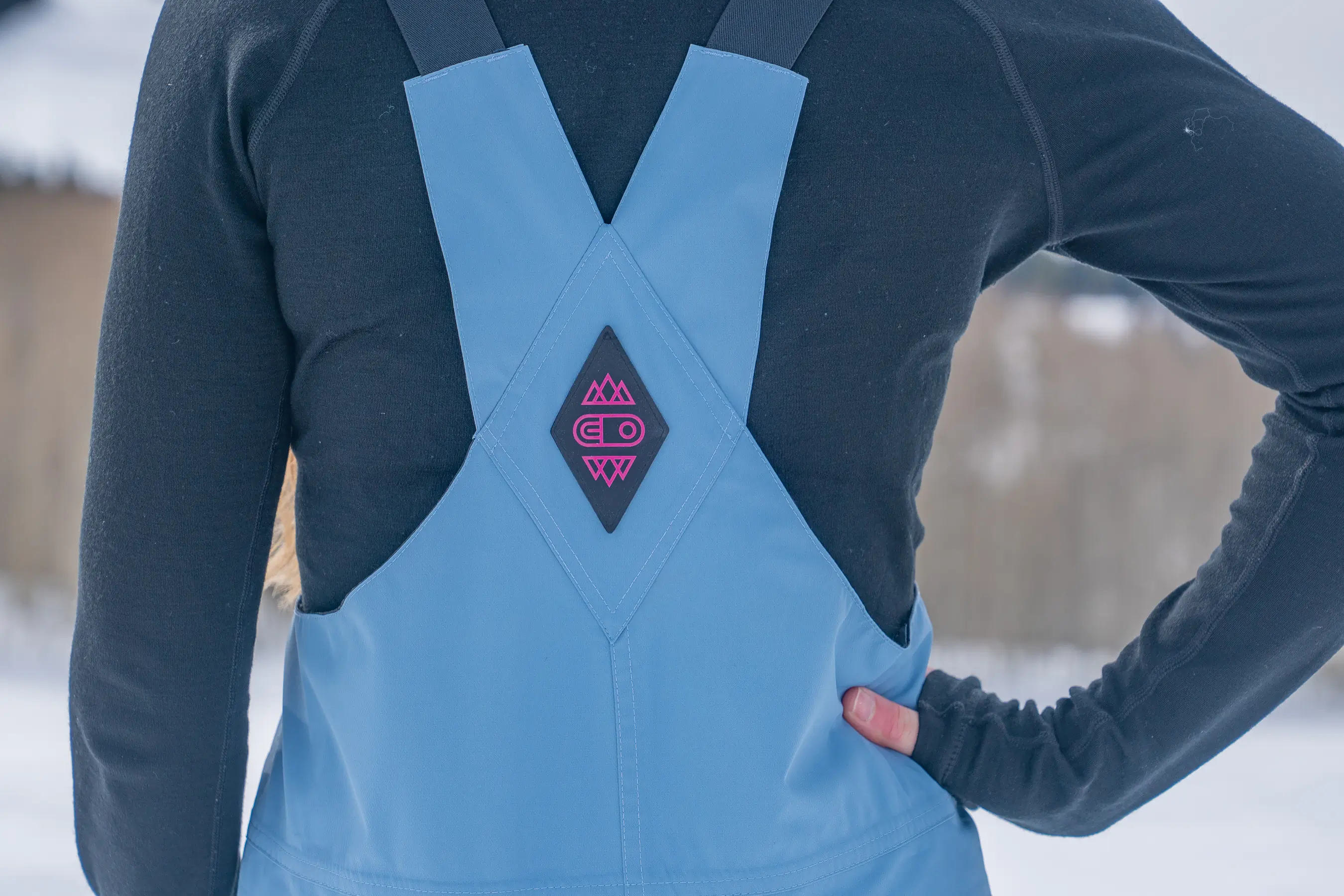



Sleeve Cuffs & Thumbholes
On long-sleeve base layers, the cuff is a piece of fabric that demarcates the garment’s edge at the wrist. It’s sewn on to help prevent fraying and increase comfort. The lengths of base layer sleeves, as well as the depth and elasticity of their cuffs, can greatly vary. Longer sleeves can reach the knuckles, covering the backs of the hands and palms. Others end at the wrist before extending over the hand.
Thumb holes, also known as thumb loops, are technical slits in long cuffs in which the thumbs can sit in. It’s like a seatbelt on a cocoon that helps to keep your hands and wrists warm. Adding thumb loops helps the sleeve stay drawn across the hand. That way, the fabric won’t bunch up when you pull on your outer jacket.
The precise width and placement of the loop that goes around your thumb varies by brand and design. A handful of thumbhole designs are simple elastic bands. But many thumbhole designs are created with a wide piece of fabric and include seams.
Sometimes, thumbholes can be tedious to slide into, cumbersome under ski gloves, or incompatible with a watch. Some ski jacket designs have built-in wrist gaiters with thumbholes, which leads a traffic jam around your wrist — and at worst, poorer circulation — if your base layer top also has thumbholes.
The Wild Rye Olivia Onesie thumbholes include a beefy cuff, so they’re cozy to wear indoors, but outside, we pull them back to put on gloves. The First Lite Kiln Hoody thumbholes are really easy to pull on and off, as are the ones on the Icebreaker 260 ZoneKnit Long Sleeve Crewe Thermal Top.
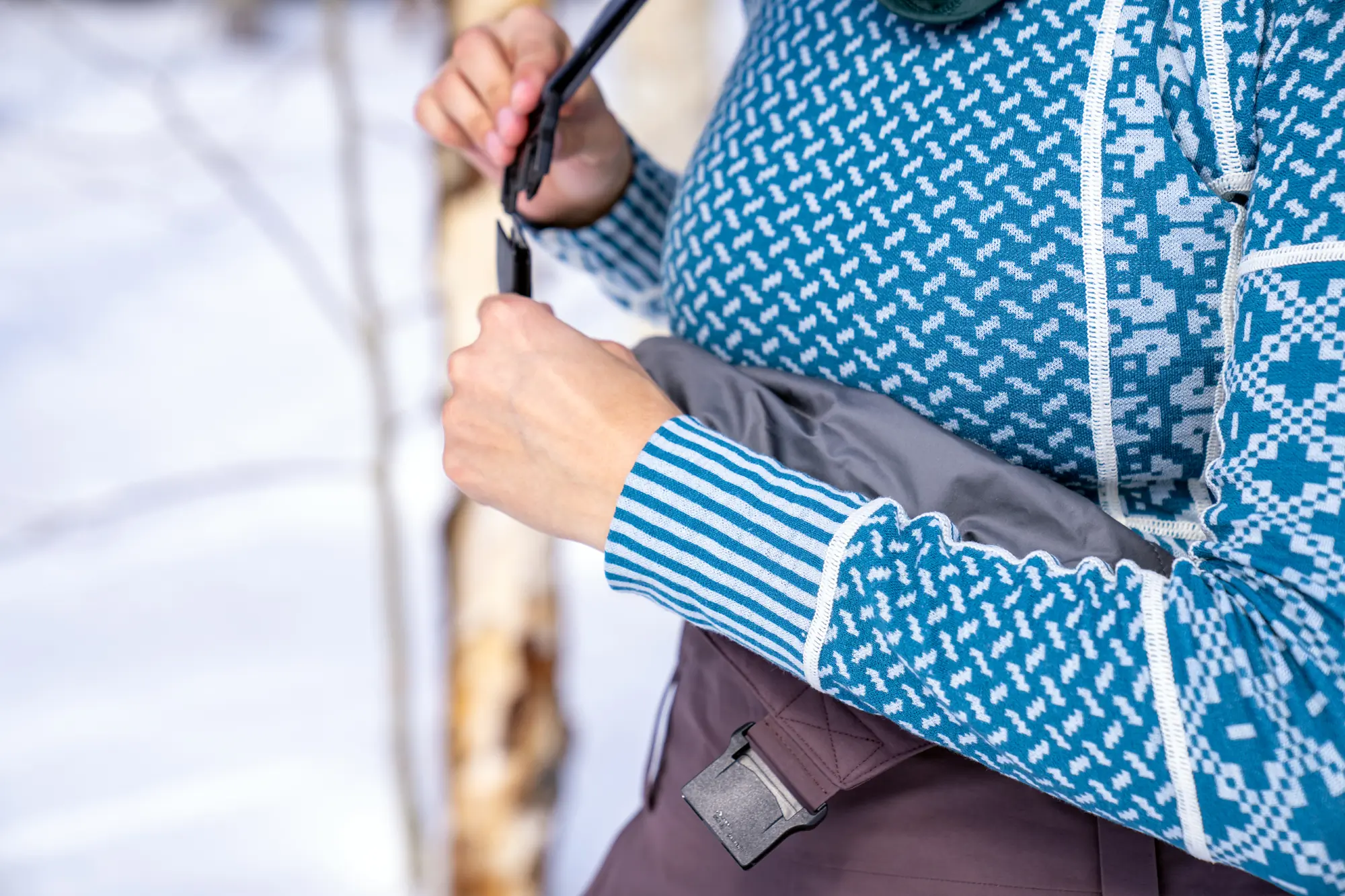



Sustainability
When it comes to sustainability, buying new gear isn’t as environmentally friendly as having a closet swap with friends or finding scores at the thrift store. But conscious consumers can shop with Mother Nature and humanity in mind.
Finding sustainable base layers includes recycled materials, ethically sourced materials, and responsible manufacturing facilities like those that don’t dump harmful toxins into nearby waterways and pay their employees a livable wage.
Certified Materials
Some women’s base layers are certified by Bluesign, an organization that works to keep chemicals out of the supply chain for the health of humans, wildlife, natural resources, and the earth. Approved factories meet standards for pollution control and worker safety. Products reach those standards partially or as a whole. The Helly Hansen Women’s HH LIFA Long-sleeve Crew Base Layer is Bluesign-approved.
The Le Bent Women’s Feathertop Ultralight Hooded Long Sleeve Tee has Nuyarn fibers, which set an impressive benchmark: Responsible Wool Standard Certified, Bluesign-certified, Oeko-Tex Standard 100, and the Global Organic Textile Standard.
Similarly, the REI Co-op Lightweight Base Layer Tights Women’s Plus Sizes and Top is made in a Fair Trade certified factory. That certification means the factory meets safe working conditions as well as environmental protections and that the supply chain is transparent.
Ortovox gives two stamps to its Ortovox 185 Rock’N’Wool Short Pants and Ortovox 185 Rock’N’Wool Long Sleeve: validation from the Fair Wear Foundation for equitable working conditions and climate neutrality.
Responsibly Sourced or Recycled Materials
We’ve seen the brand Daehlie do well with material sourcing for products, selecting fiber from fast-growing eucalyptus trees on a farm that’s certified by the Forest Stewardship Council.
Using textiles sourced from recycled materials, such as old plastics, is one way that companies reduce waste and demand for petroleum-based products. Materials can be partially or fully recycled, like the recycled polyester in the Patagonia Capilene line.
Smartwool argues that wool is an inherently responsible choice: It’s not plastic, and it breaks down in water and soil. The brand’s wool is ZQ-certified by a New Zealand-based group that sets standards for animal welfare, social responsibility, and environmental sustainability. You’ll see this wool in the Smartwool Women’s Classic Thermal Merino Base Layer Crew and Bottom, as well as all of the brand’s base layer offerings.
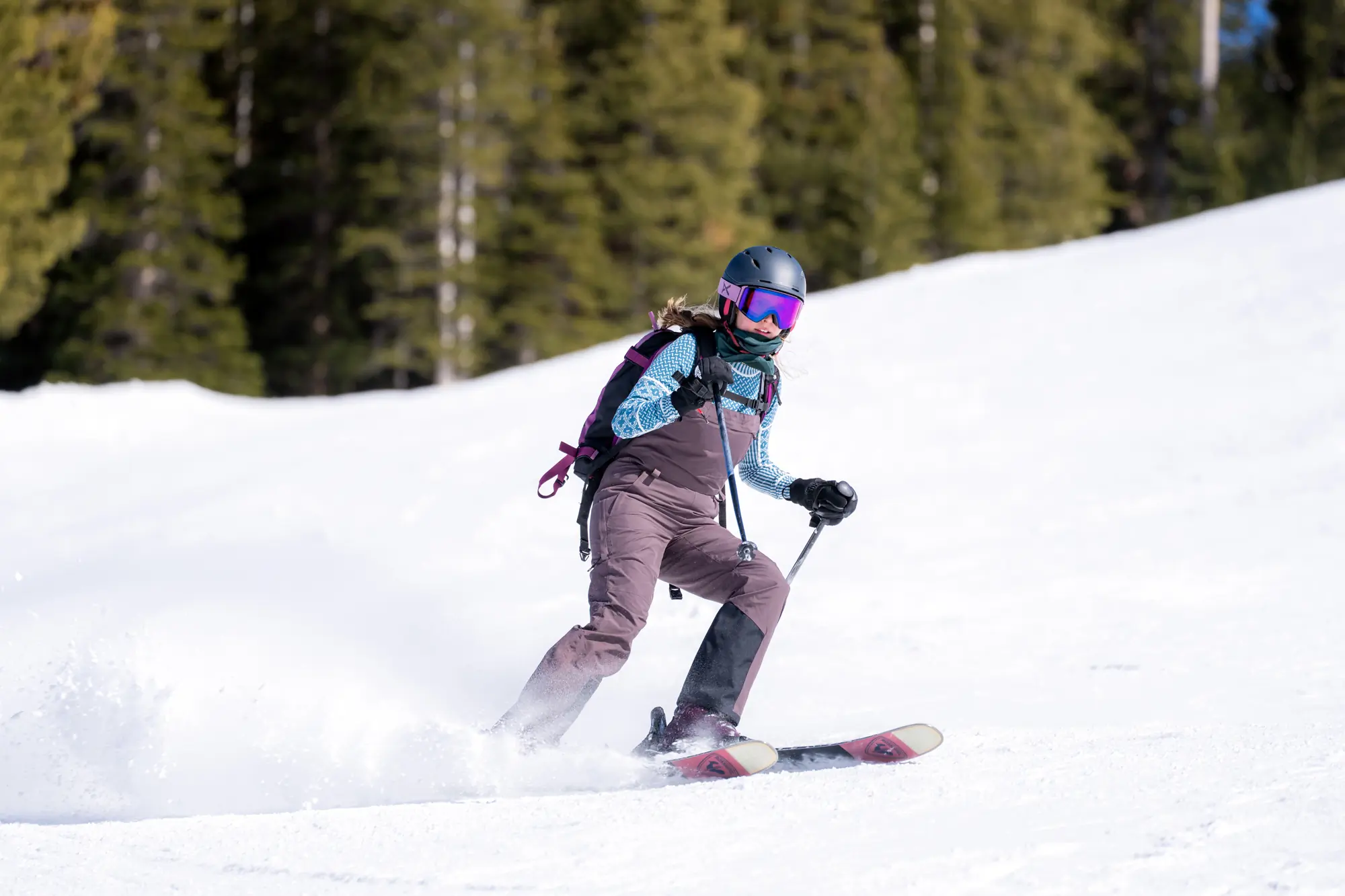



Price & Value
Our favorite women’s base layers run from $40 to $229. That includes options for the budget-conscious shopper and the athlete wanting to splurge on a technical textile.
Budget Base Layers for Women
The most economic choices have a basic construction, fit, and work well. The blends are synthetic, not as complex or articulated, and typically do not include wool. You won’t find pockets in the leggings. The weight category, thermal power, and fabric density is usually lower. You probably won’t see a synthetic fabric coated to block odors.
But if you need a basic base layer for sledding and ski hill laps, these certainly get the job done. On this lower end, there’s the REI Co-op Lightweight Tights and Long-Sleeve Crew Top, each for $40, and the Helly Hansen LIFA Long-Sleeve Crew at $45.
Mid-Tier Base Layers for Women
In the “100 bucks, give or take” shelf, you’ll see a bump up in the complexity of the textiles, how they’re constructed, as well as a slightly higher quality and softer feel of materials. Merino wool enters the game.
These are among our favorite base layers out there. We’ve got the Smartwool Classic Thermal Merino Crew and Bottom for $115. There’s also the Le Bent Core Lightweight Crew for $105. The Ortovox 185 Rock’N’Wool Long Sleeve and matching Short Pants are tagged at $100-110.
Premium Base Layers for Women
While the Wild Rye Olivia Onesie is available at $249, it’s close to a mid-tier price point when you consider the price of a bottom and a top base layer that’s woven together in a single package. This stylish one-piece is the most technical to create and includes a drop seat for bathroom breaks.
But those tad higher price points include the Kari Traa Rose Half Zip Top for $120 (the Kari Traa Rose High Waisted Pants are labeled at $110), which is woven with high-quality wool from merino sheep, has an articulated cut and the patterns are stylish. They look beautiful.
The First Lite Kiln Hoody is $130, while the sister piece, the Long Janes, is lower at $95 for a good balance.
The most premium option in our guide is the Icebreaker 260 ZoneKnit Long Sleeve Crewe Thermal Top ($165) and Icebreaker 260 ZoneKnit Thermal Leggings ($165), which are strategically body-mapped for highly breathable zones in an otherwise heat-loaded wool package.


Frequently Asked Questions
Base layers — as their name implies — are meant to be worn as the base of your clothing system, next to your skin. If you pile on cotton underwear and a cotton T-shirt under your base layers, you’re negating all the ways a base layer is intended to work. Most base layer bottoms are intended to be worn as long underwear. Incredibly soft base layers like the Le Bent Women’s Core Lightweight Crew Base Layer make this a breeze.
Be sure to pick out a chest layer from the Best Sports Bras that can stay put, wick sweat, and help keep you comfortable in winter’s playground.
A base layer should have a close fit to your body without sacrificing freedom of movement. Some of our favorite base layers are tight-ish, but not restrictive or circulation-ending, while others are a tad roomier but not bulky.
Also, your skin and the fabric need to be touching in order for the base layer to do its job: absorb moisture. Base layers that are too loose, or saggy under the arms or around the groin or torso, can’t efficiently wick sweat.
Unless they’re heavyweight and bulky, most base layers should fit nicely beneath a fleece midlayer, as well as a pair of Carhartt pants, overalls, or ski outerwear.
Really, it comes down to what you can afford and what activities you do. Most of the women’s base layers on this list are 100% wool, a wool-synthetic blend, or a synthetic blend. Synthetics are highly relentless, high-wicking, and can be treated with odor-beating technology. Synthetics usually have a lower price tag.
Wool is less staunch, but it has temperature-regulating properties that can work in a wide range of weather. Wool combats odors and also wicks well. Wool, often sourced from Merino sheep, typically costs more than synthetic blends. In blends, wool is woven with other fibers for longevity, elasticity, and fit.
The percentage of wool varies in each design, which is why some blends are warmer than others. Be sure to check the percentage of wool to get a better idea.
The weight category of the apparel you choose is also important. Some people will do well with a pair of lightweight base layers. If you’re perpetually cold or doing a sedentary winter activity, grab midweight or heavyweight base layers or a wool blend. If you’re buying base layers to backcountry ski, run, or another intense activity, go light.
For the greatest warmth and protection, you’ll want to wear full underwear and a sports bra followed by base layers, which wick sweat and help manage body heat during high output or laidback activities.
Base layers fit beneath a midlayer — like a fleece, micro-down jacket, or synthetic insulation layer — followed by an outer layer, like a shell, that protects against the elements from precipitation to wind. The shell can be insulated or non-insulated.
Depending on the day’s activity and climate, you might prefer to wear a base layer beneath an outer layer and skip that middle piece of insulation.
Of course, for us gals, bras are often a necessity, especially during activity. So don’t make the mistake of wearing a non-wicking bra beneath your base layers. Find yourself a sports bra that fits, wicks, and supports to combat sweat and chills on your upper half. Then let any of these base layers work their magic!
A women’s base layer top and bottom are essential components of your ski and snowboard gear. They build the base — literally — for a warm, dry day on the slopes.
Improper layering, or having materials like cotton next to your skin, is a recipe for a wet, cold, disaster. Getting sweaty without a good base layer to wick away moisture or one that quickly dries can lead to serious body chills, discomfort, loss of energy, and can steal away the fun. Getting goosebumps outside on a winter day is a mild inconvenience at best and potentially deadly at worst, leading to hypothermia if you’re not near a place where you can warm up, like in the backcountry.
Basically, base layers will help you stay warmer on the slopes, so you can happily ski bell to bell or midday to après.


We hit the slopes to find the best women’s ski bibs. Whether you snowboard or ski at the resort or in the backcountry, we’ve got you covered.
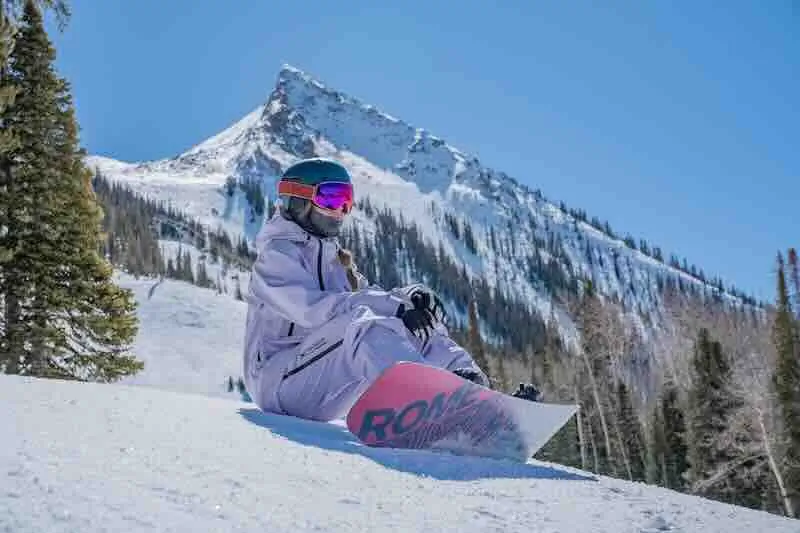

From the ski resort to the backcountry, we tested and found the best snowboard jackets for all conditions and budgets.
Read the full article here




